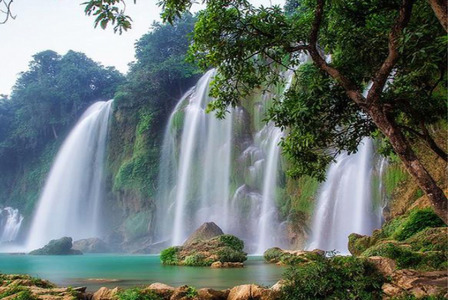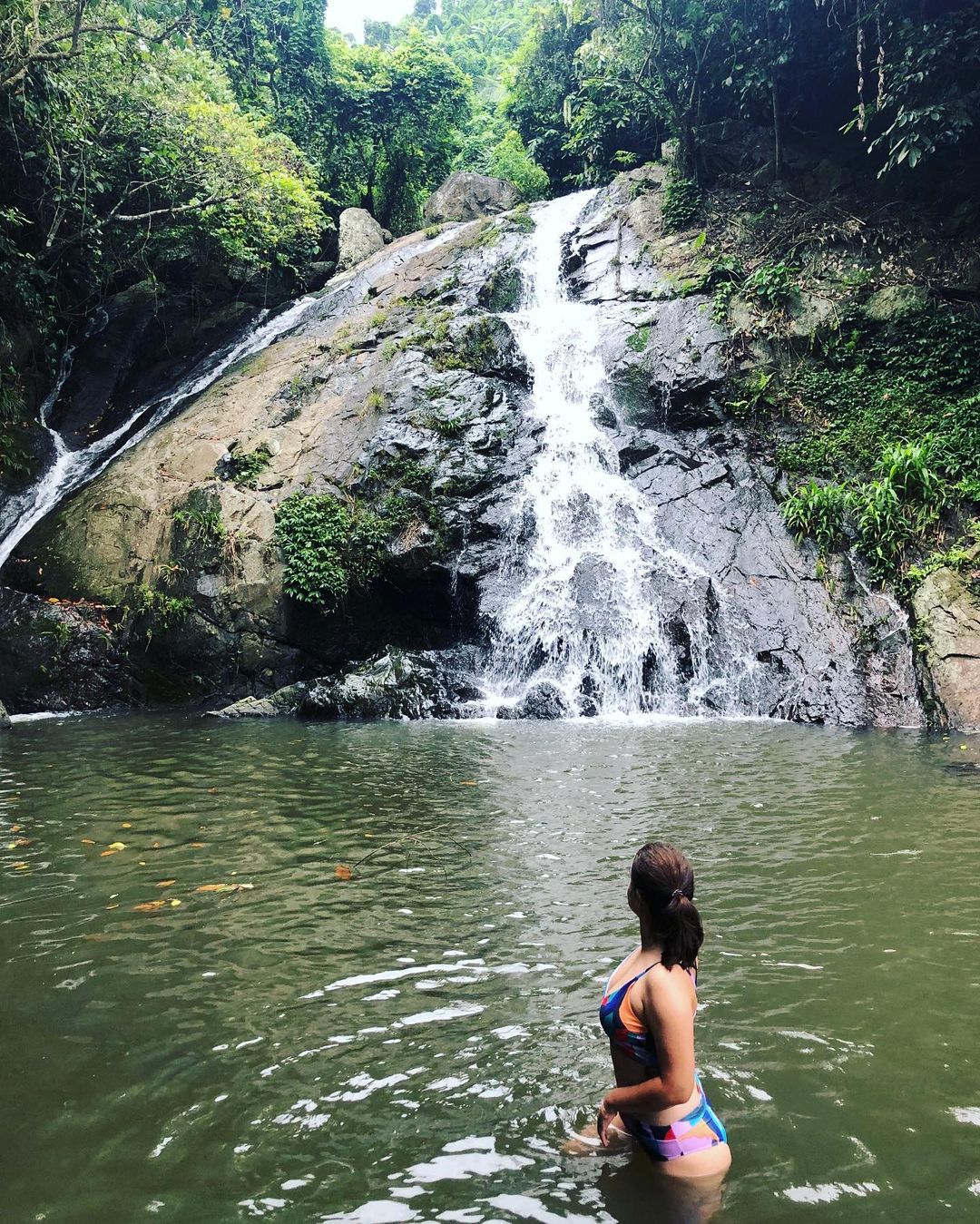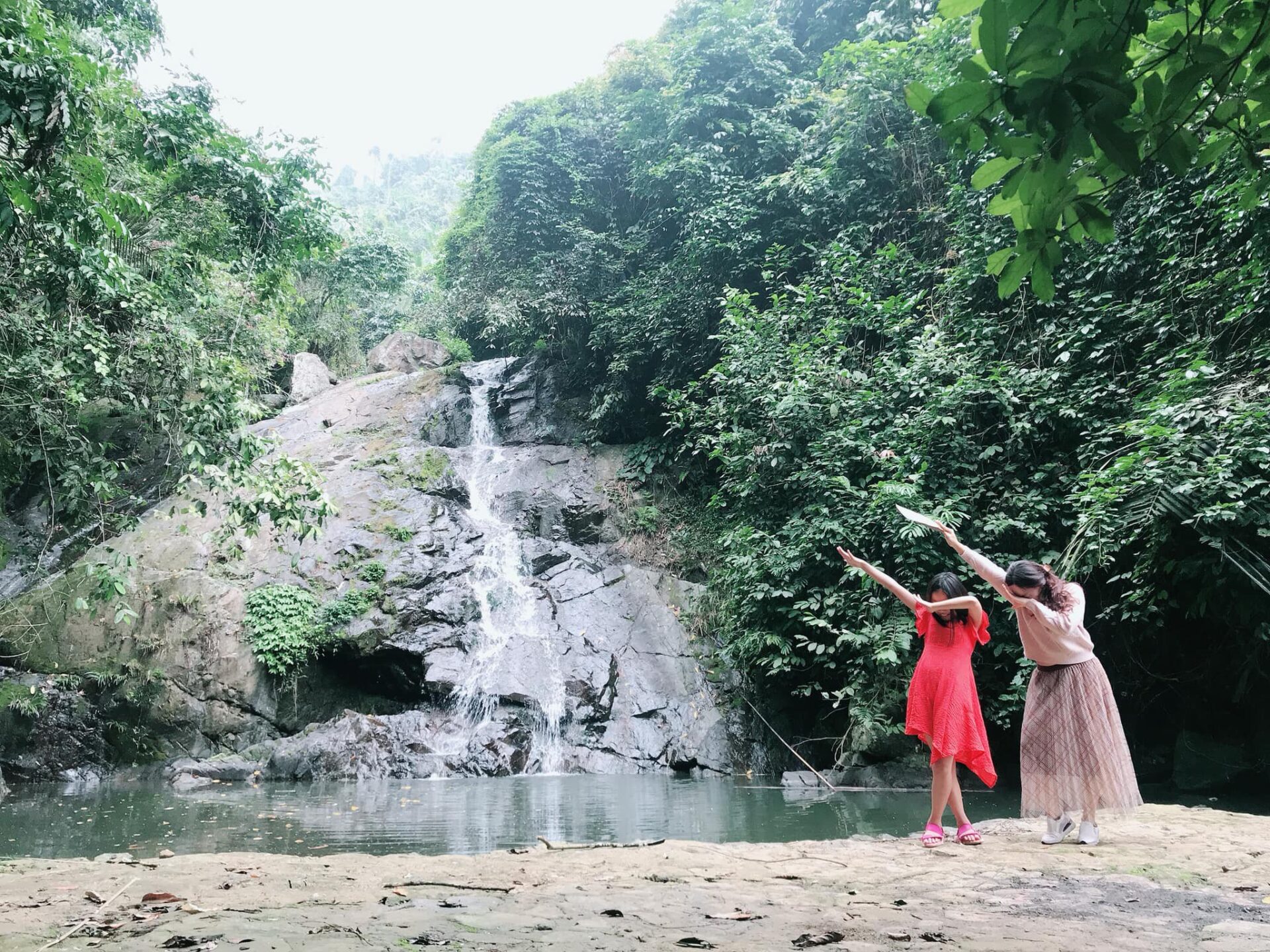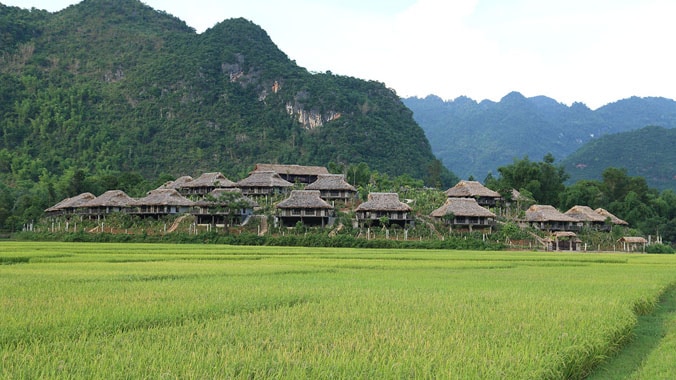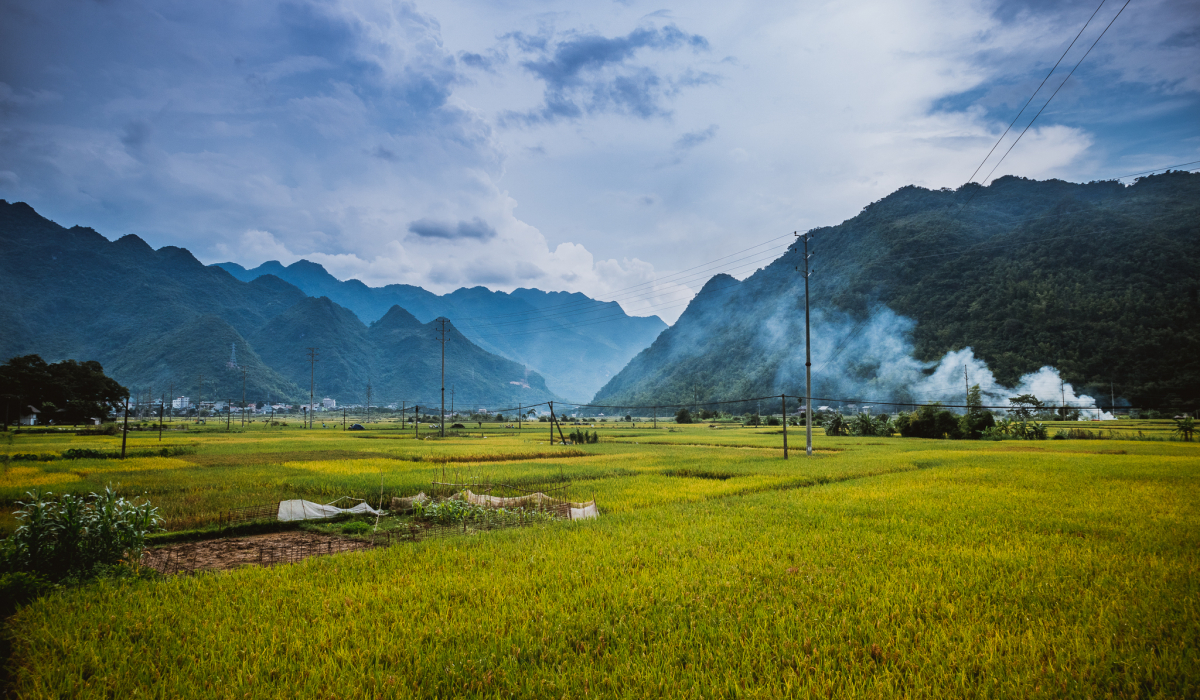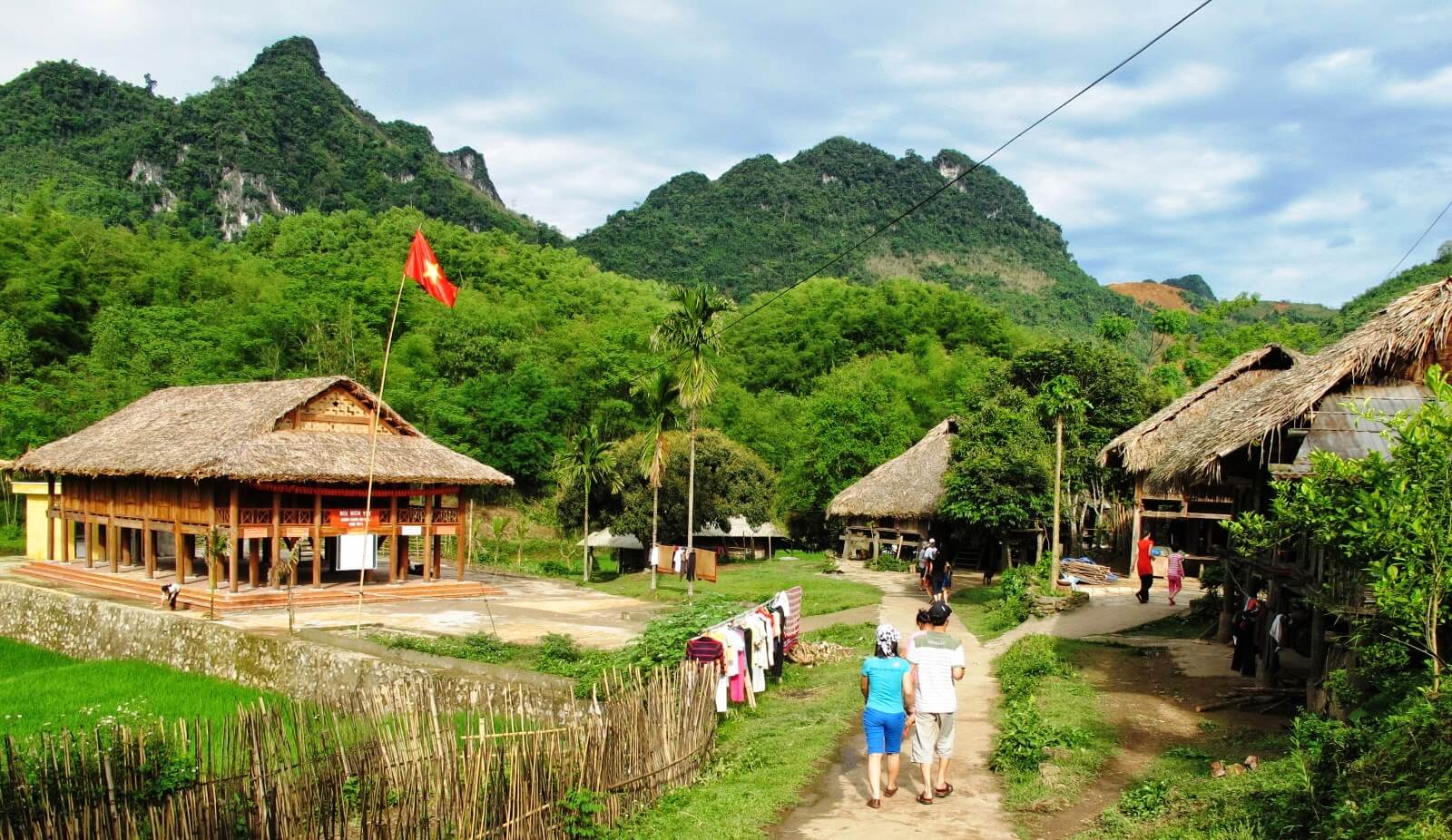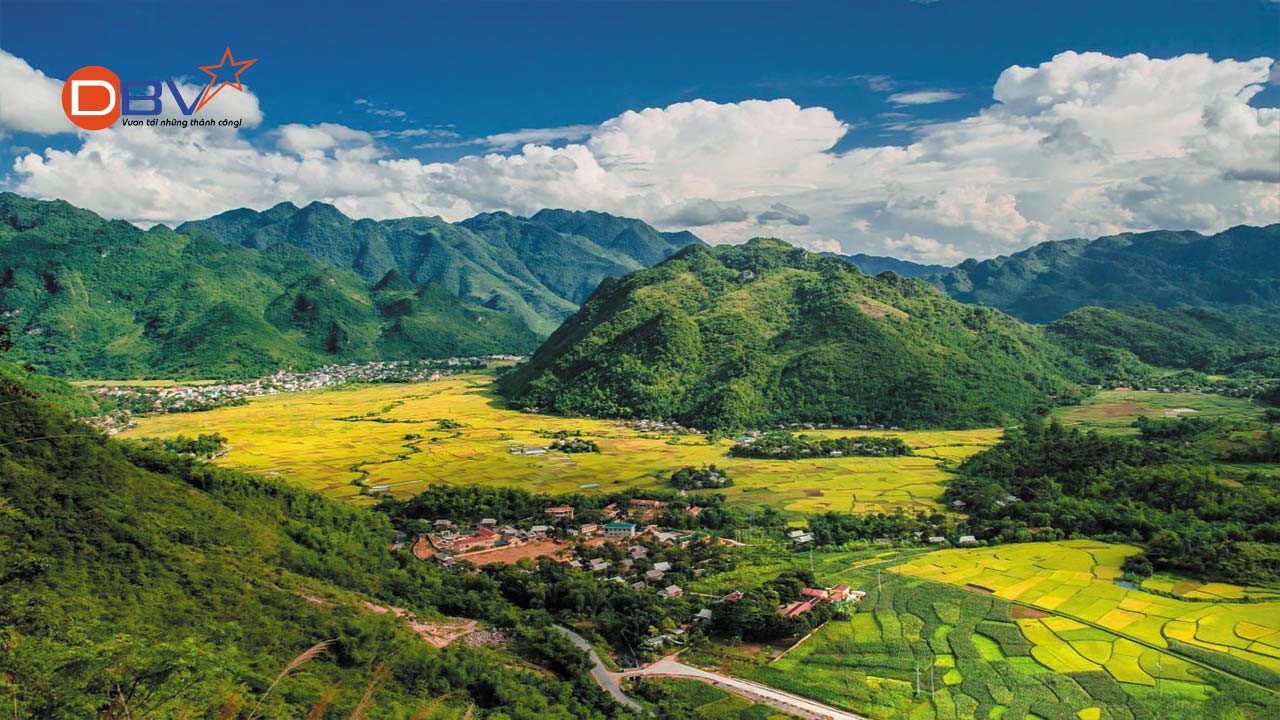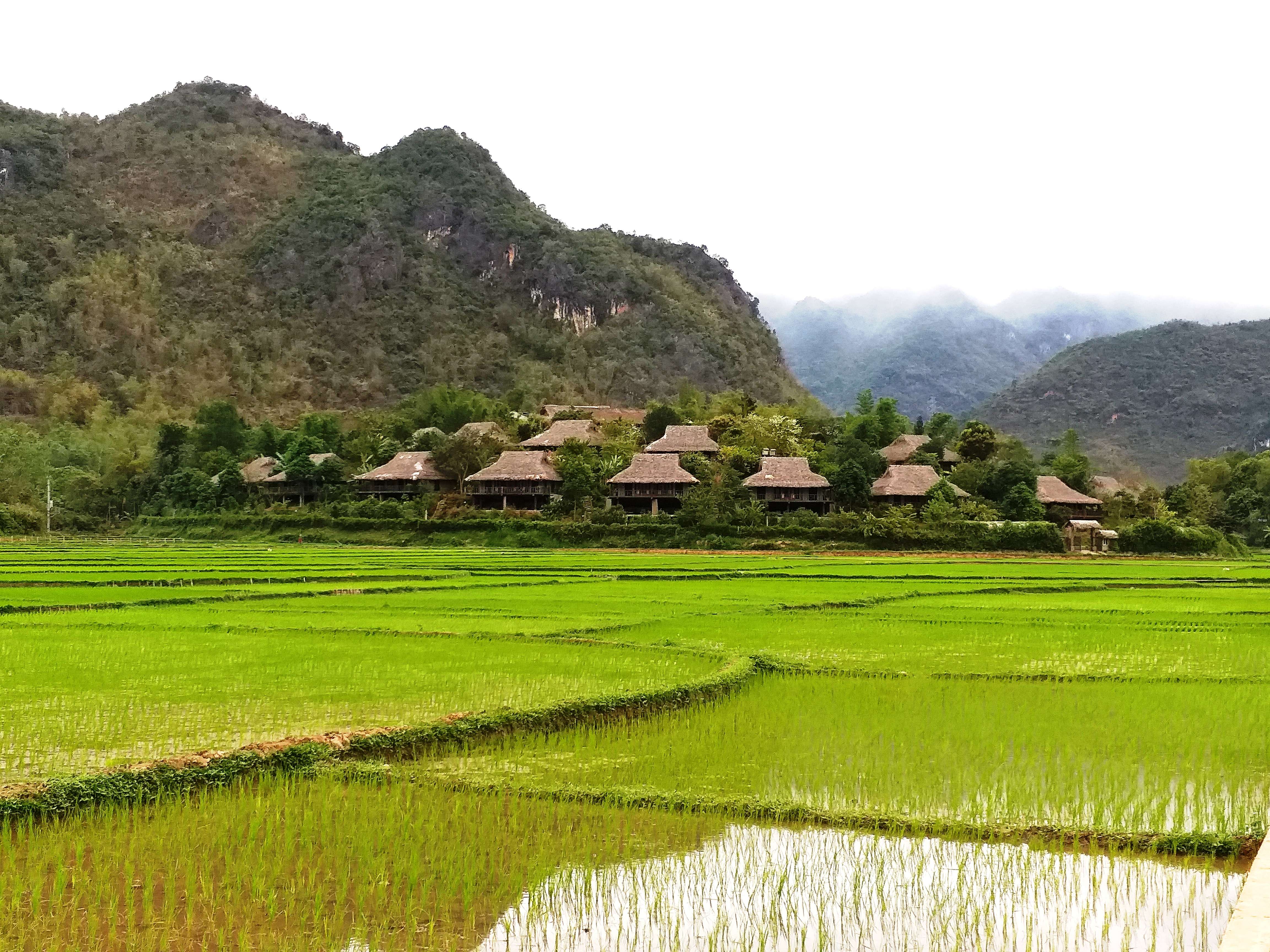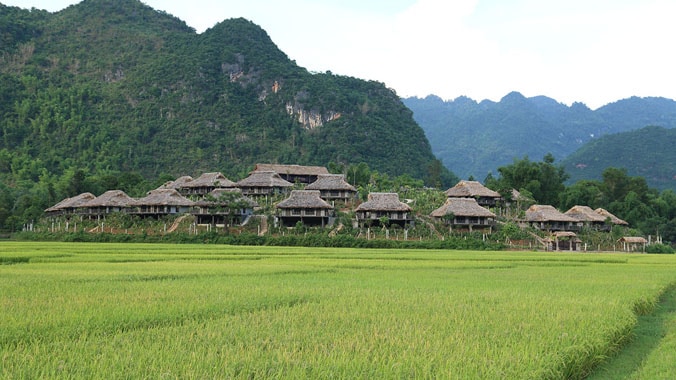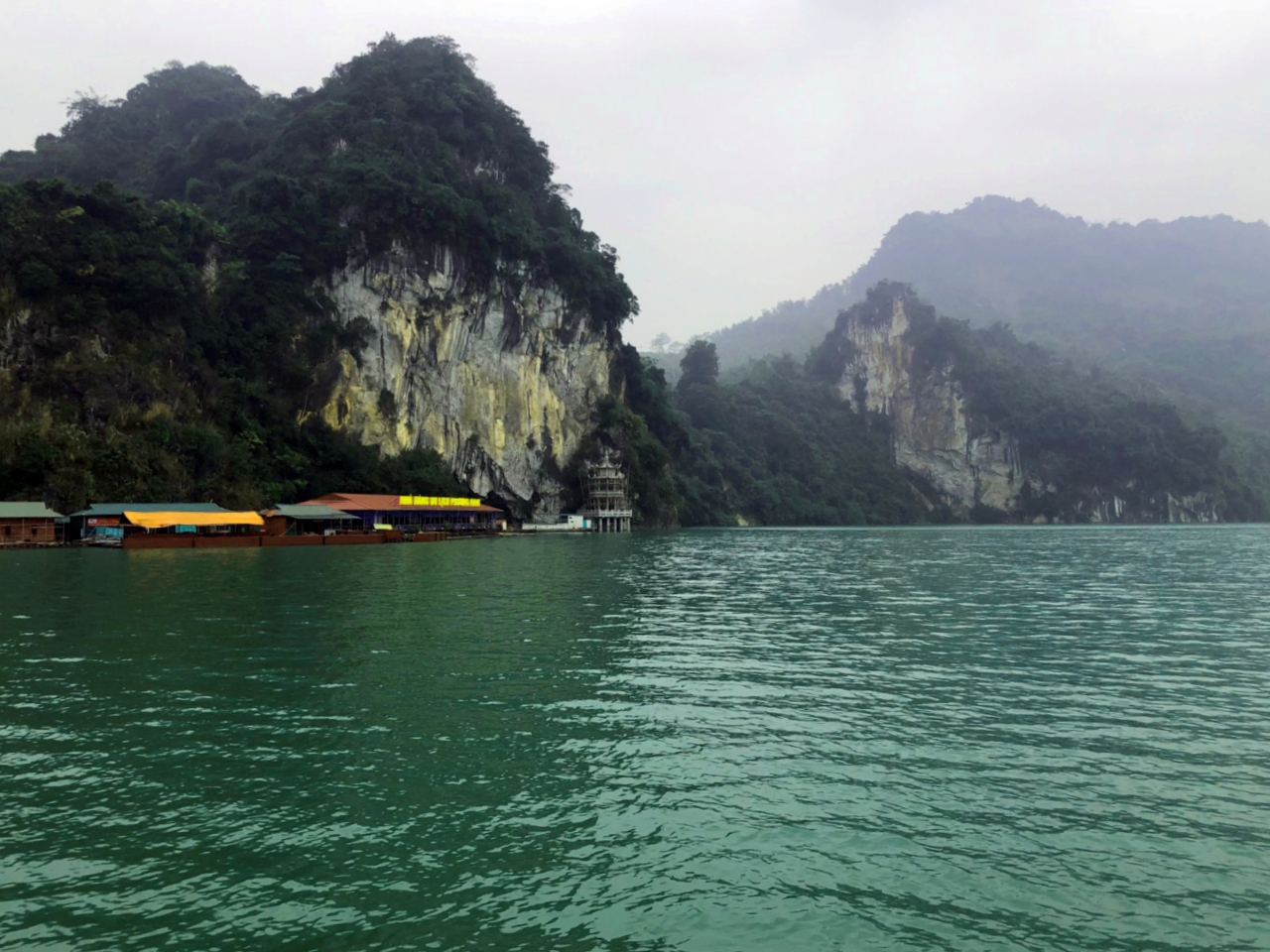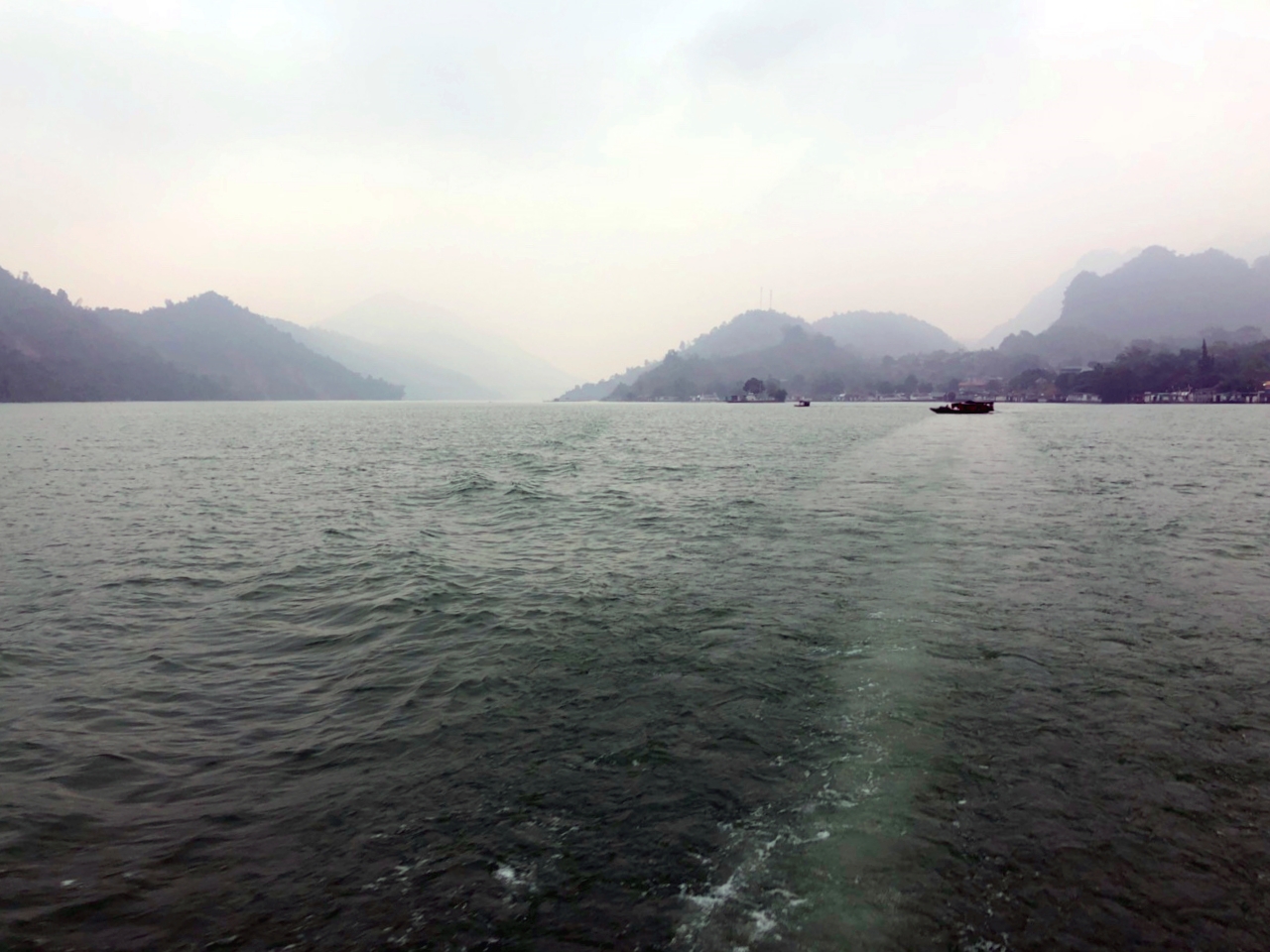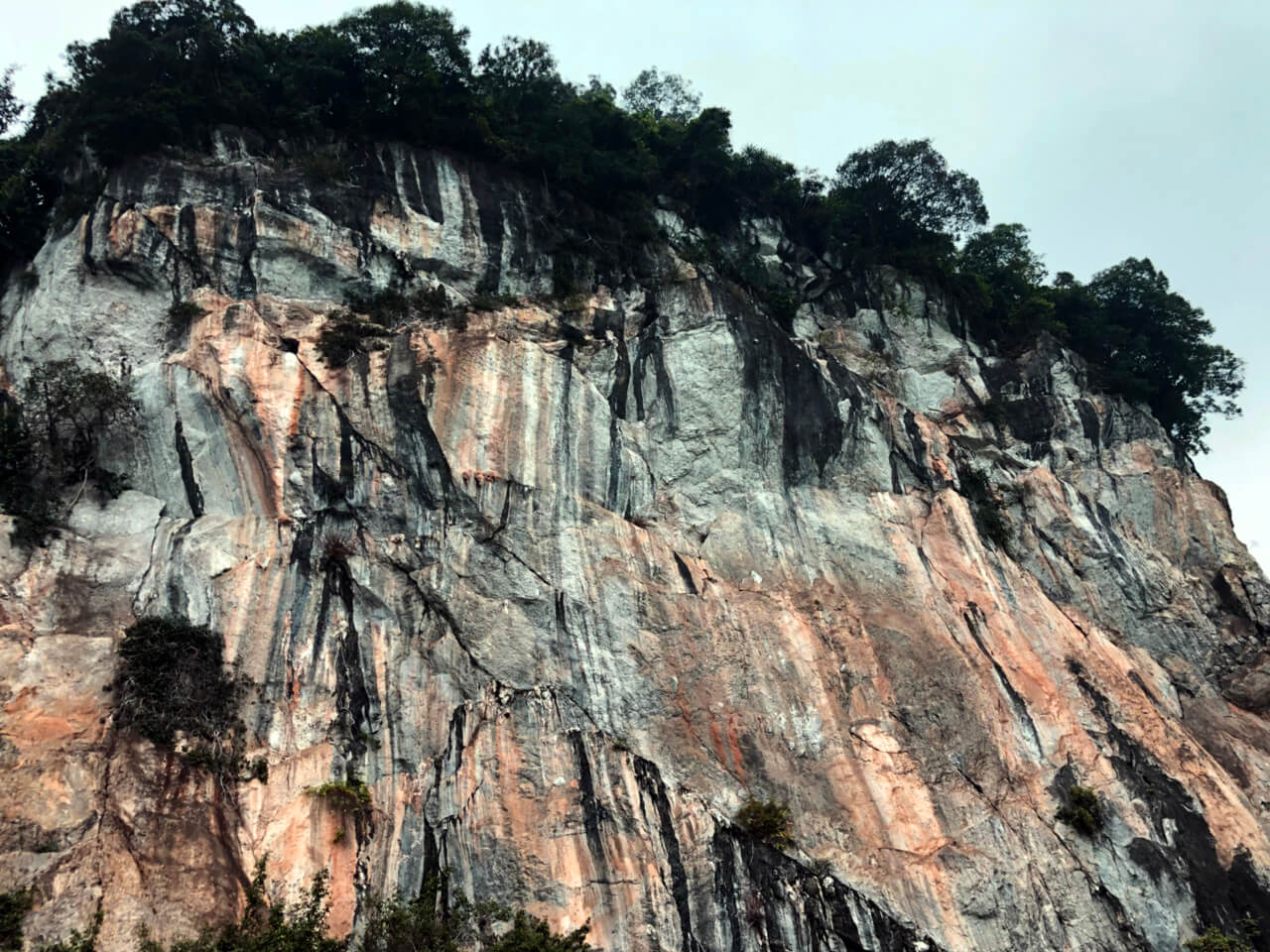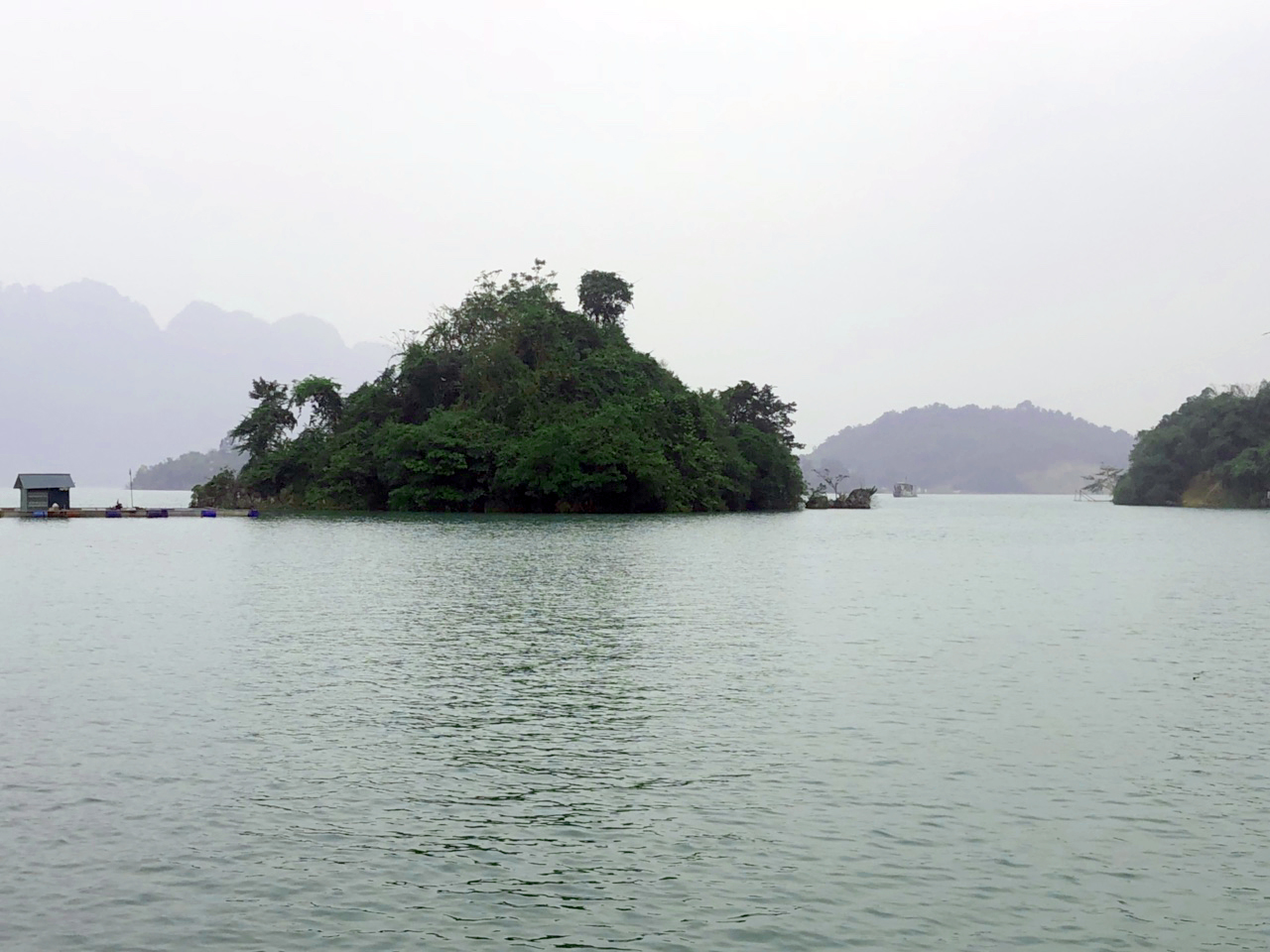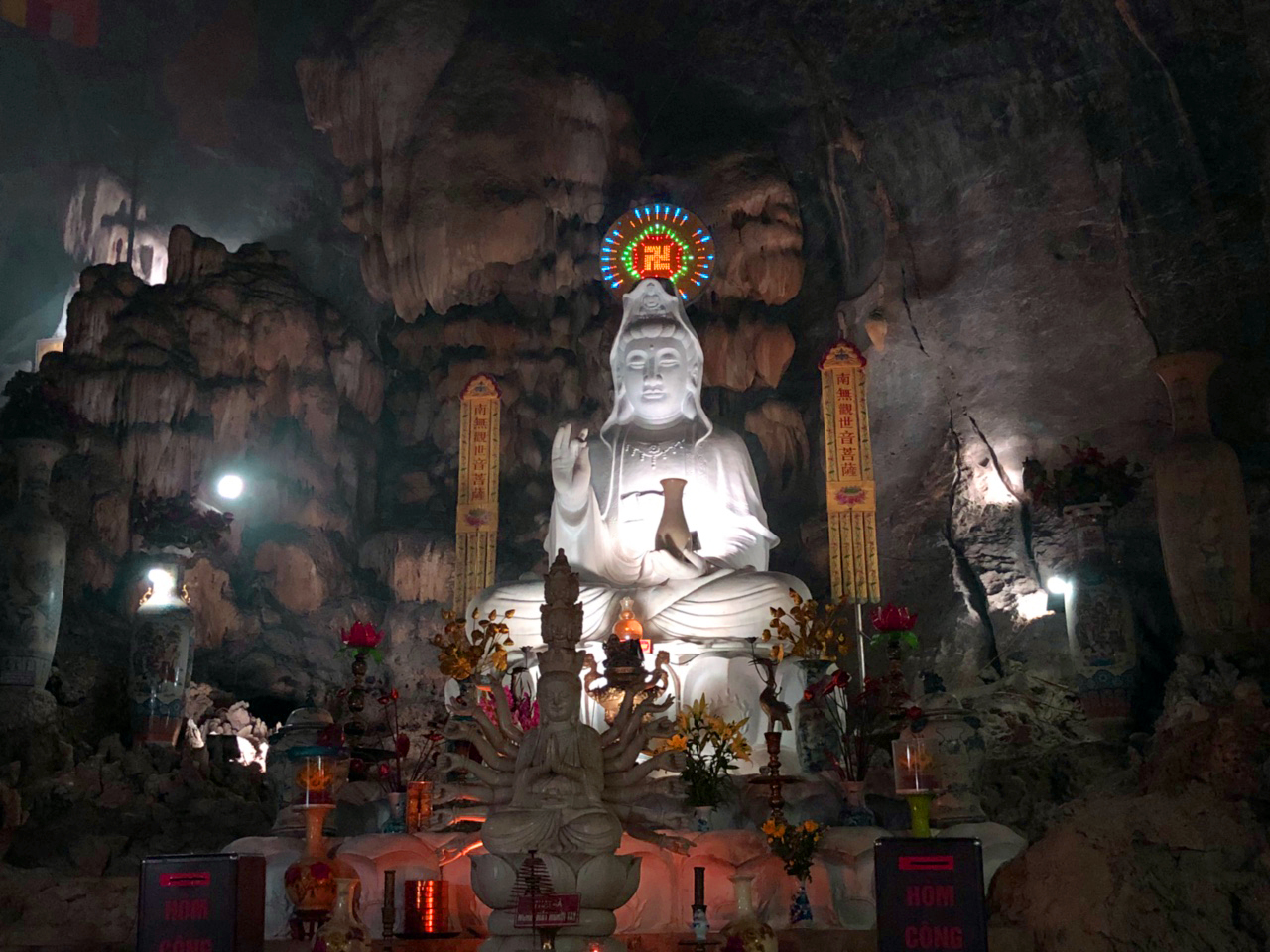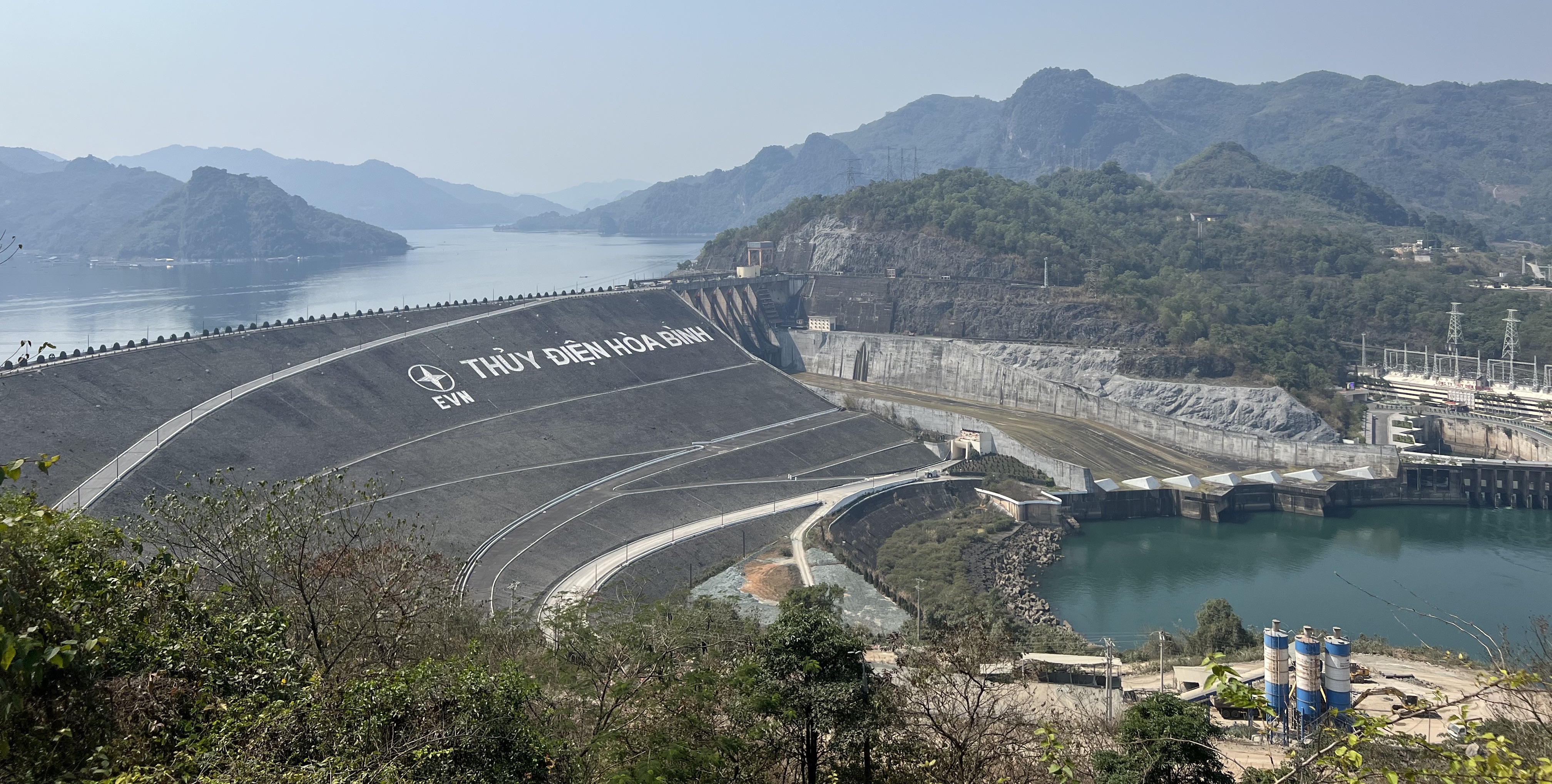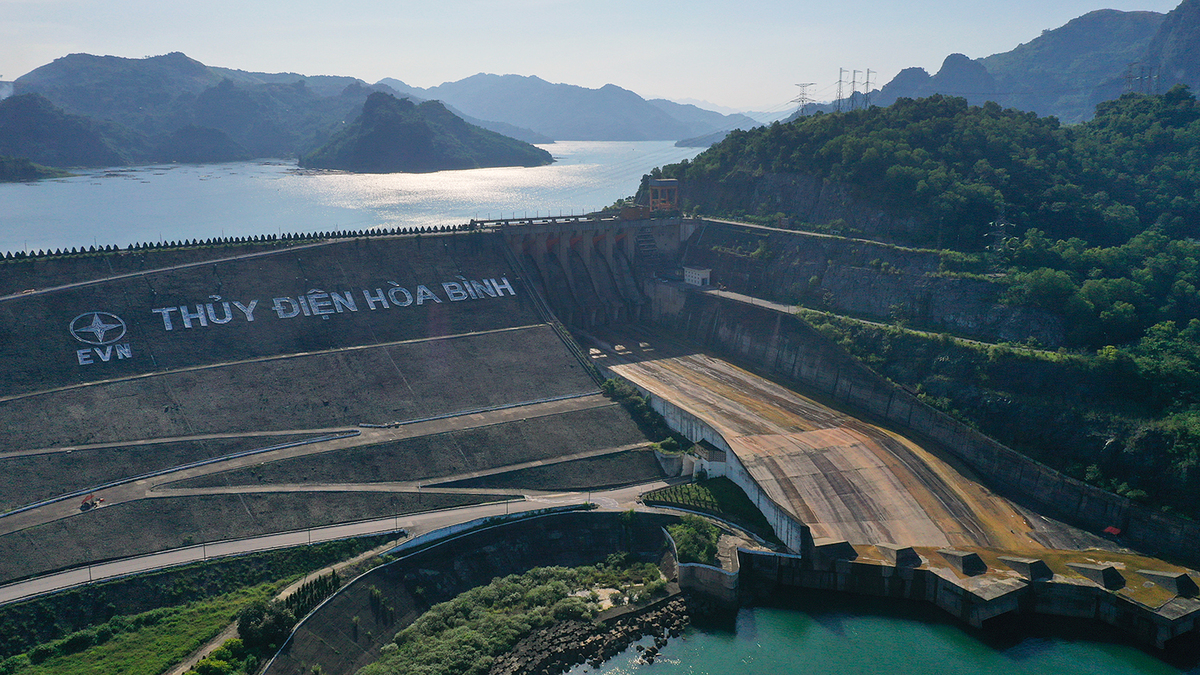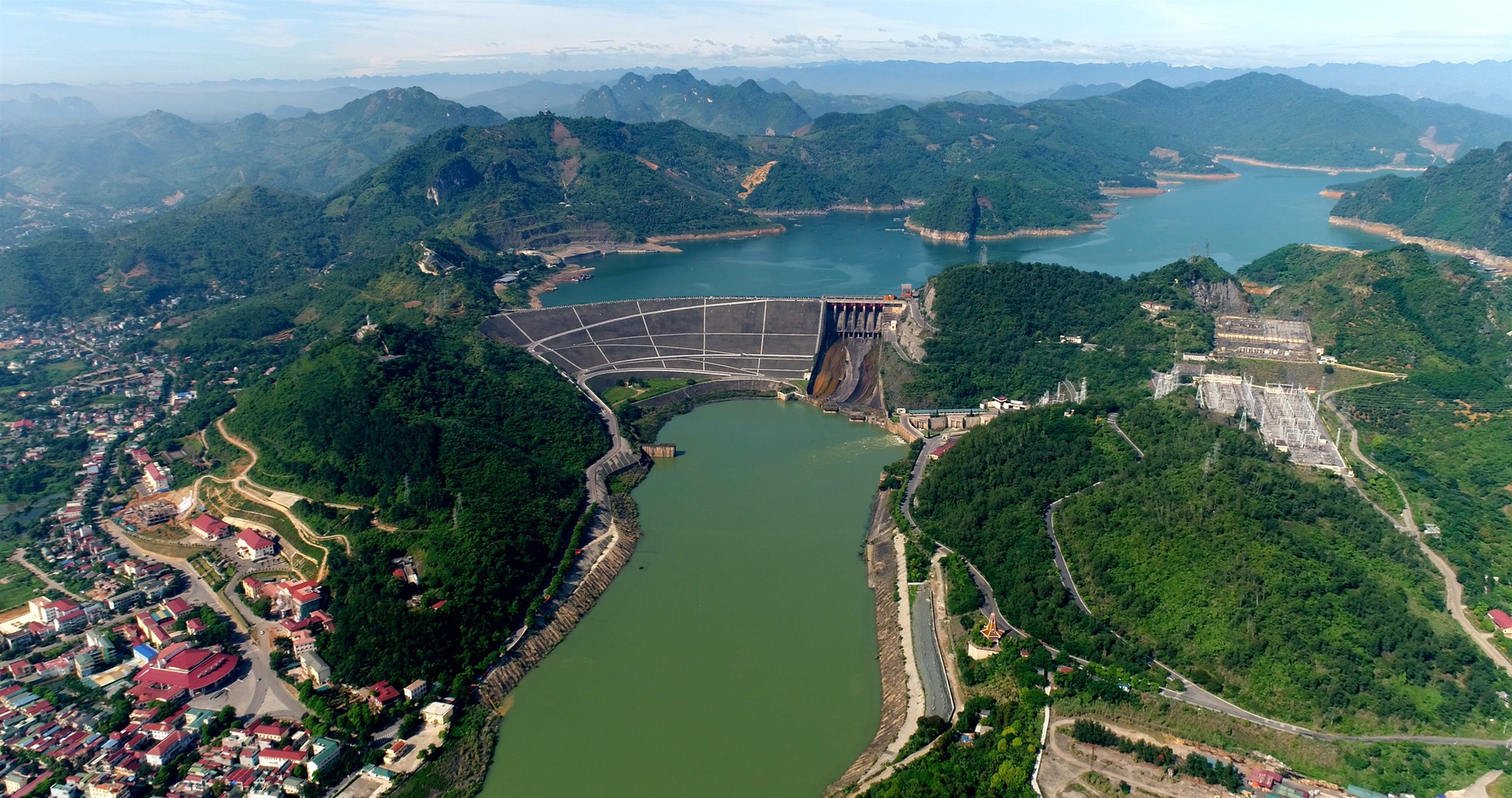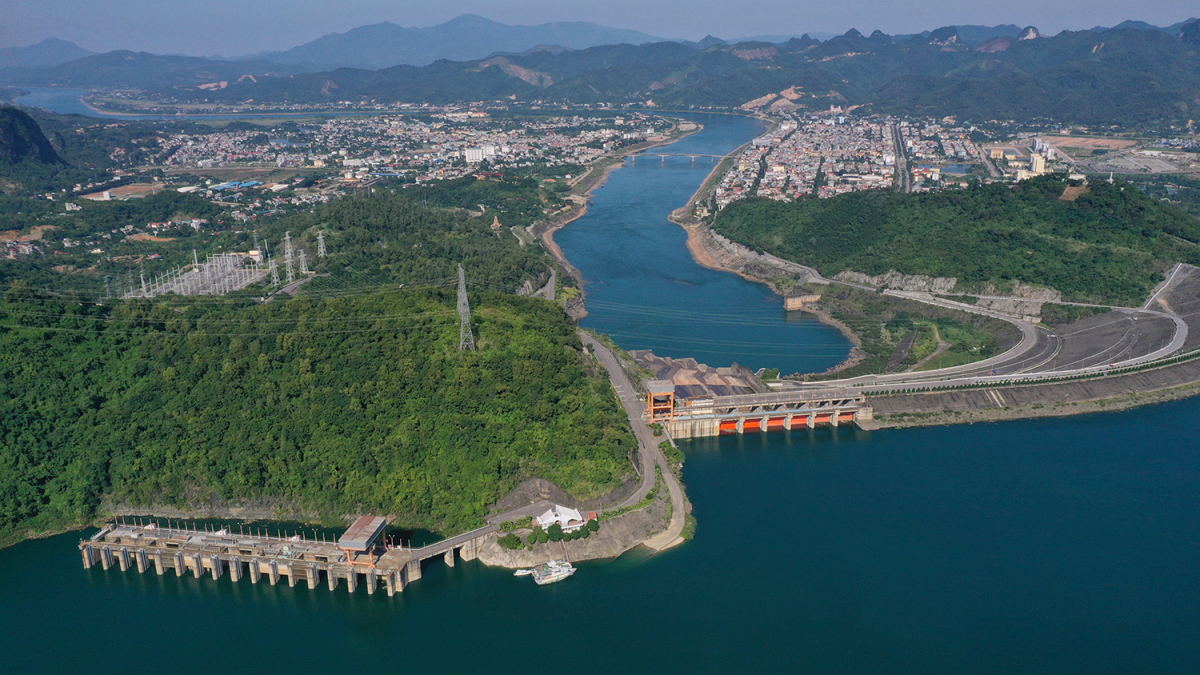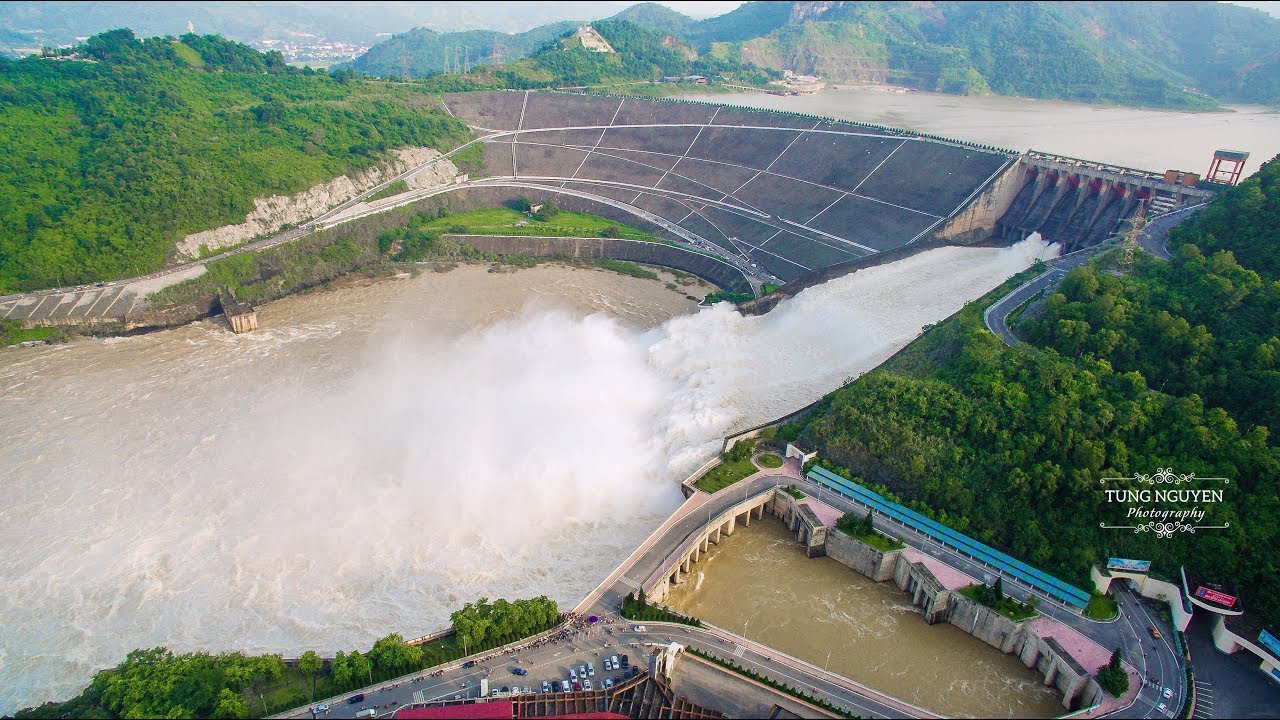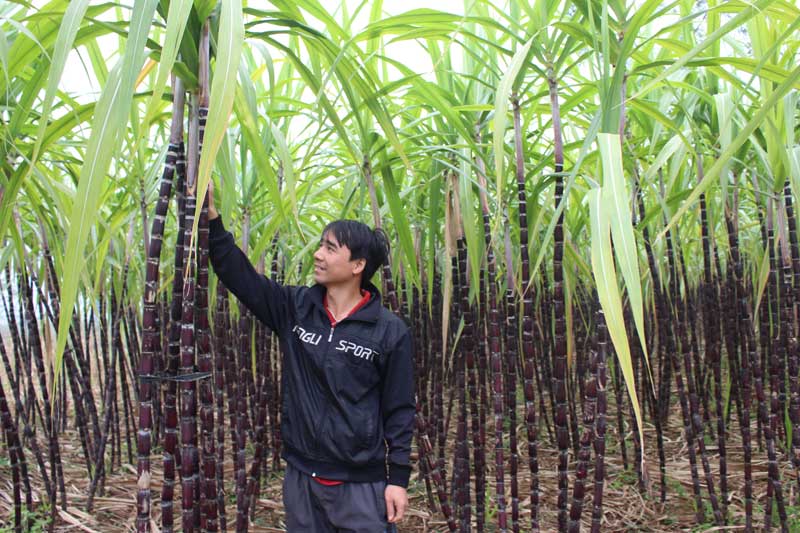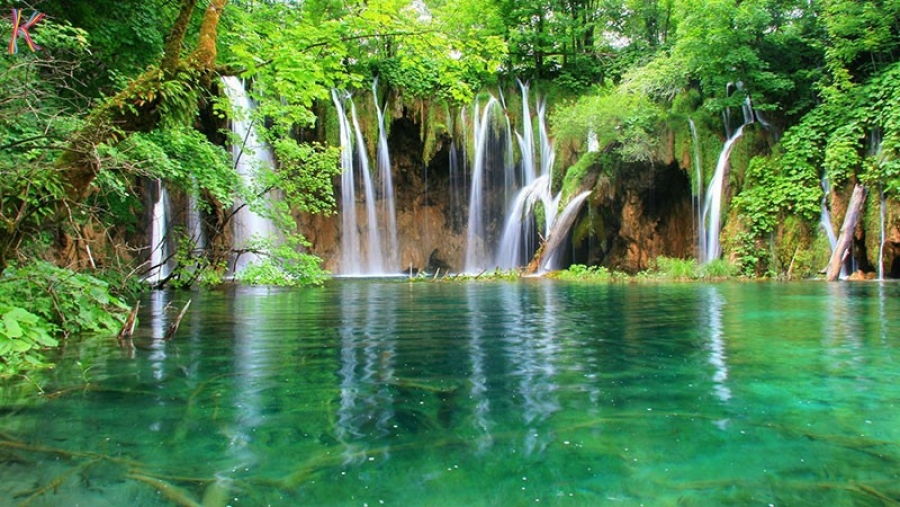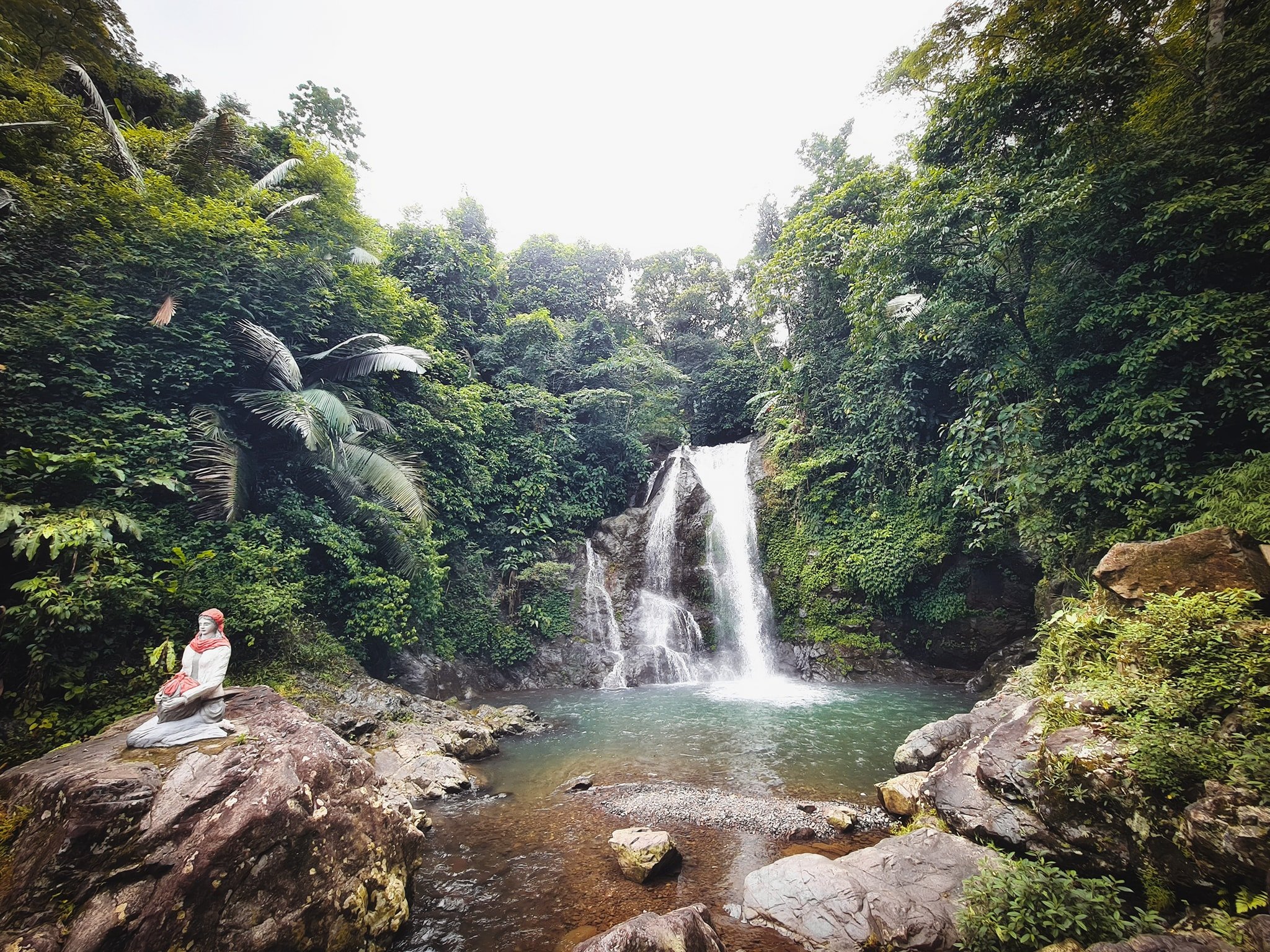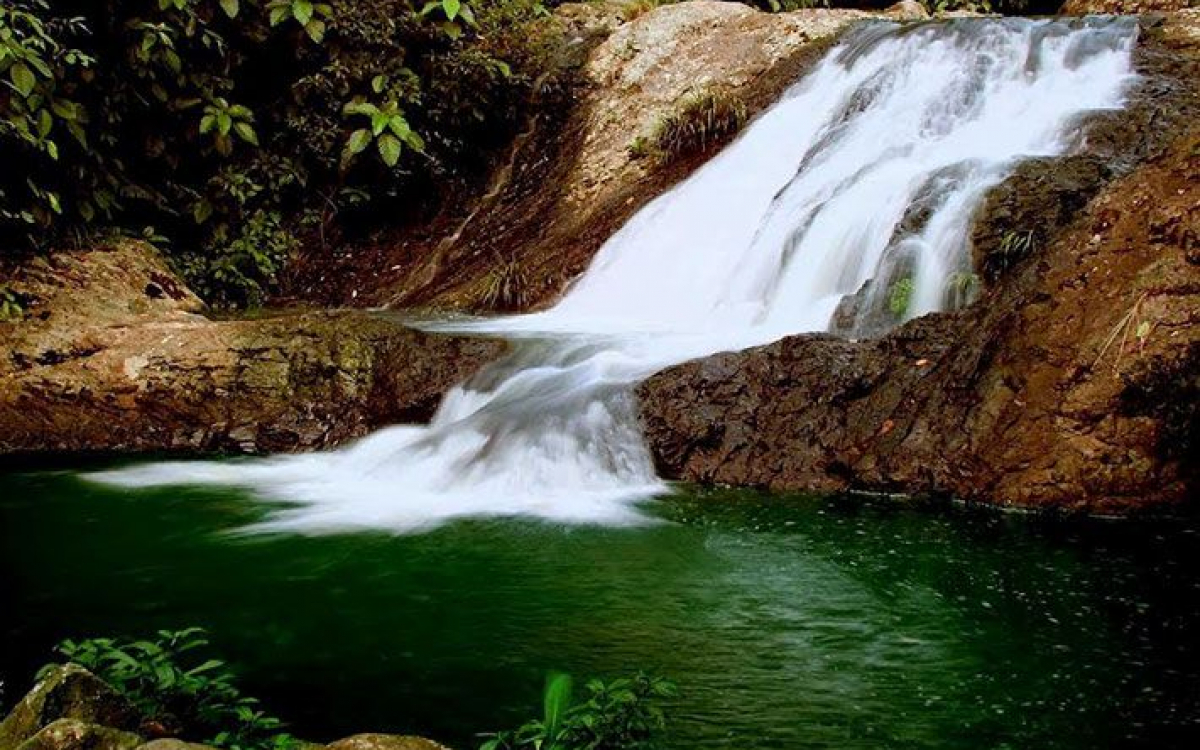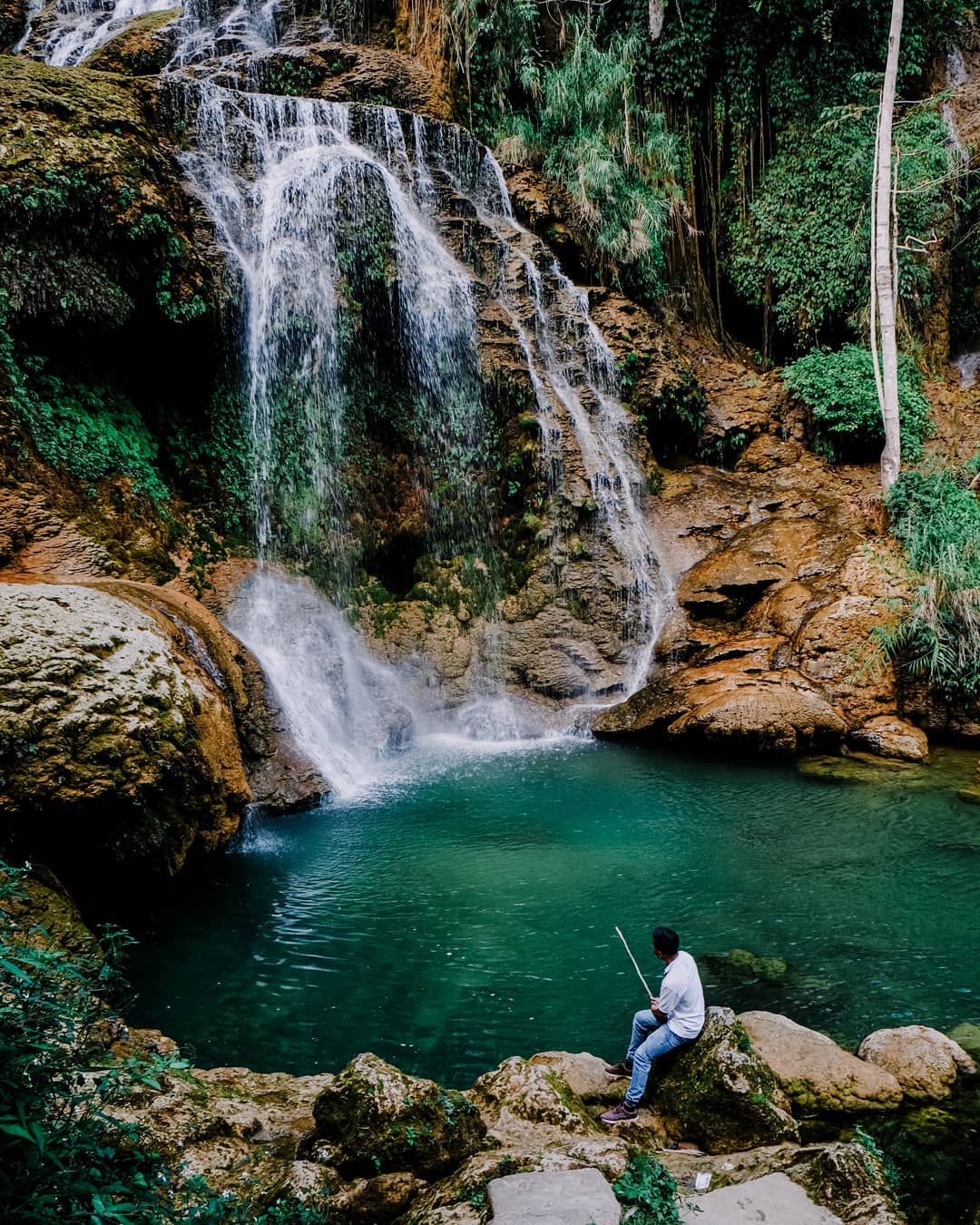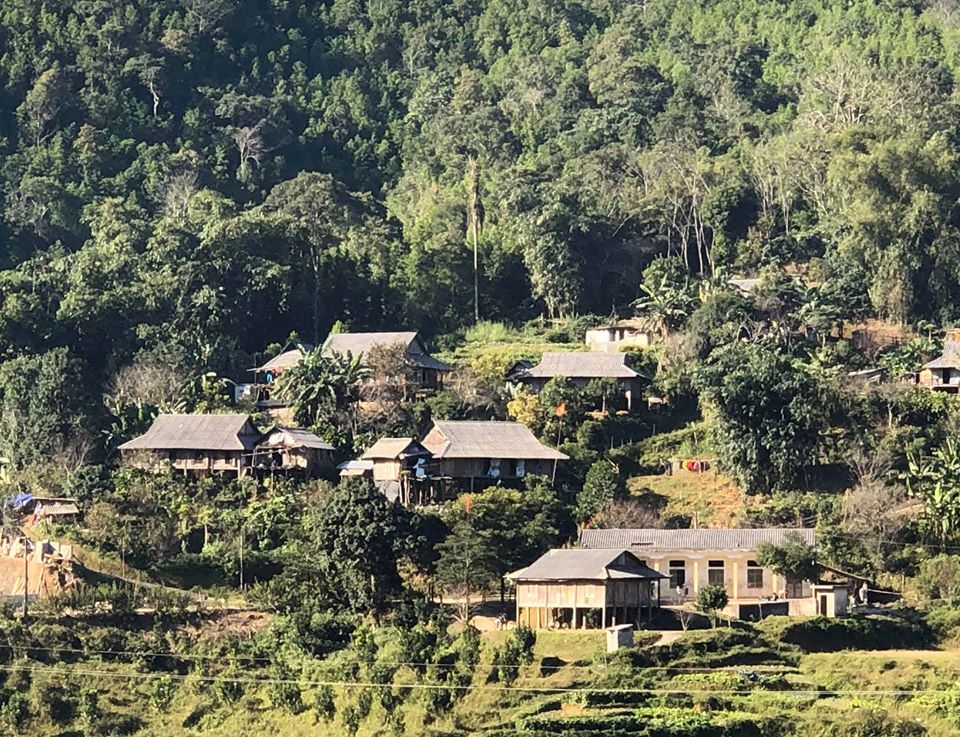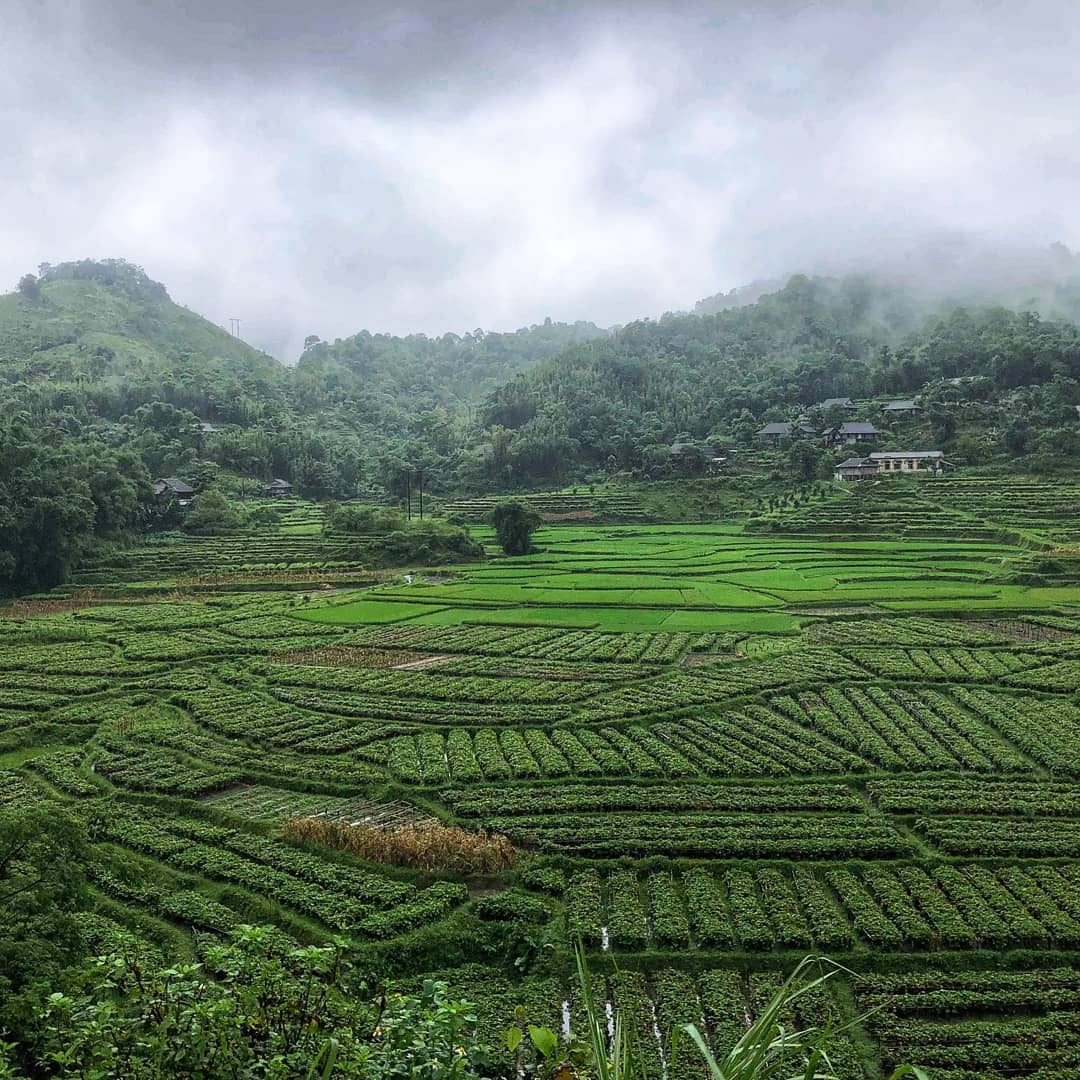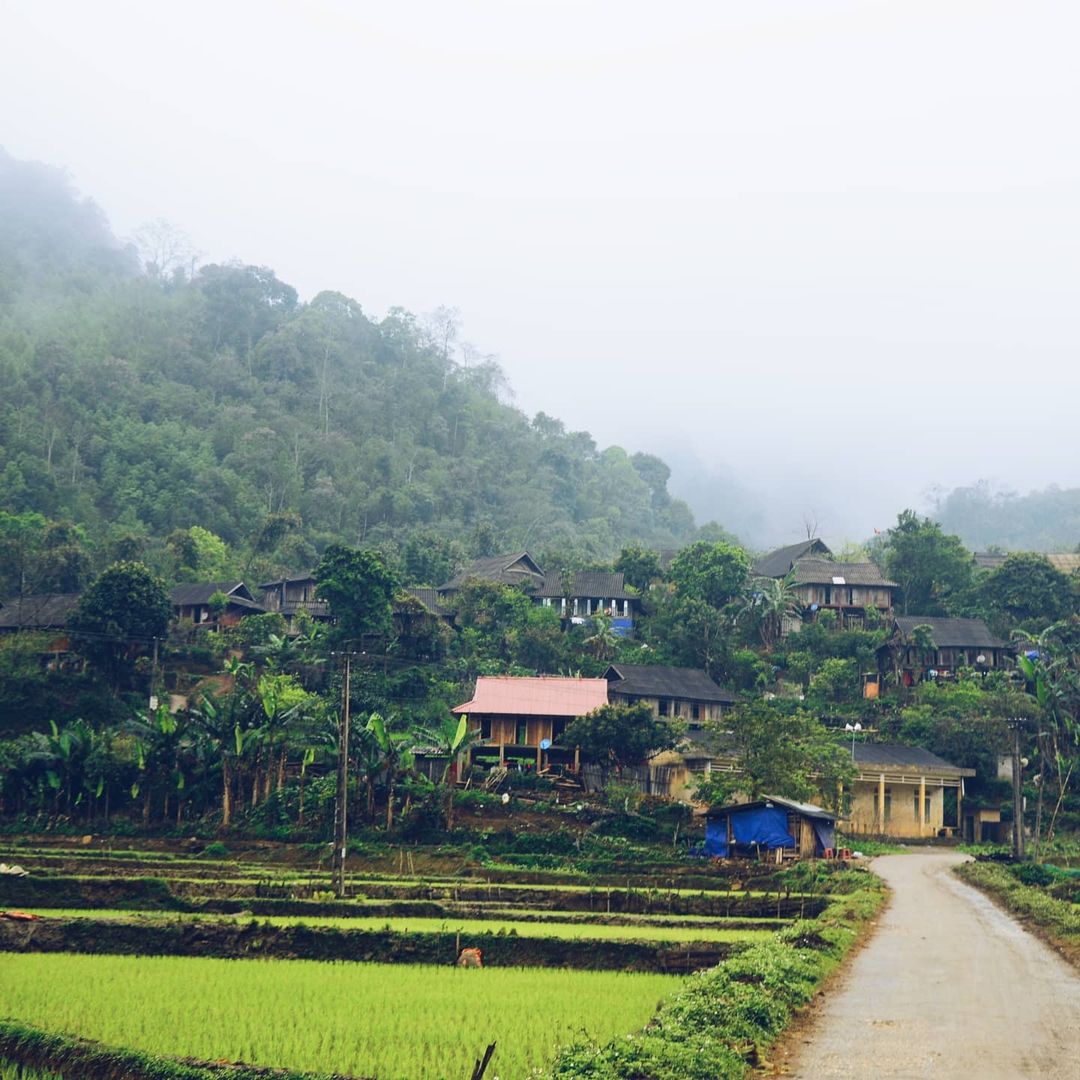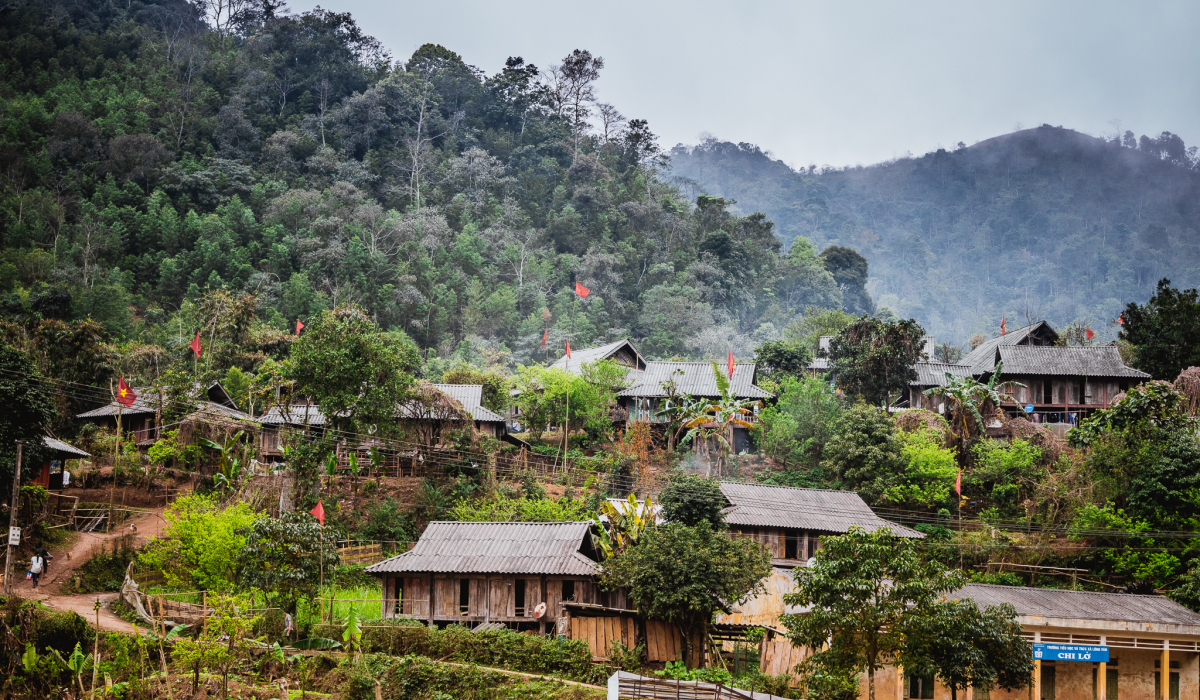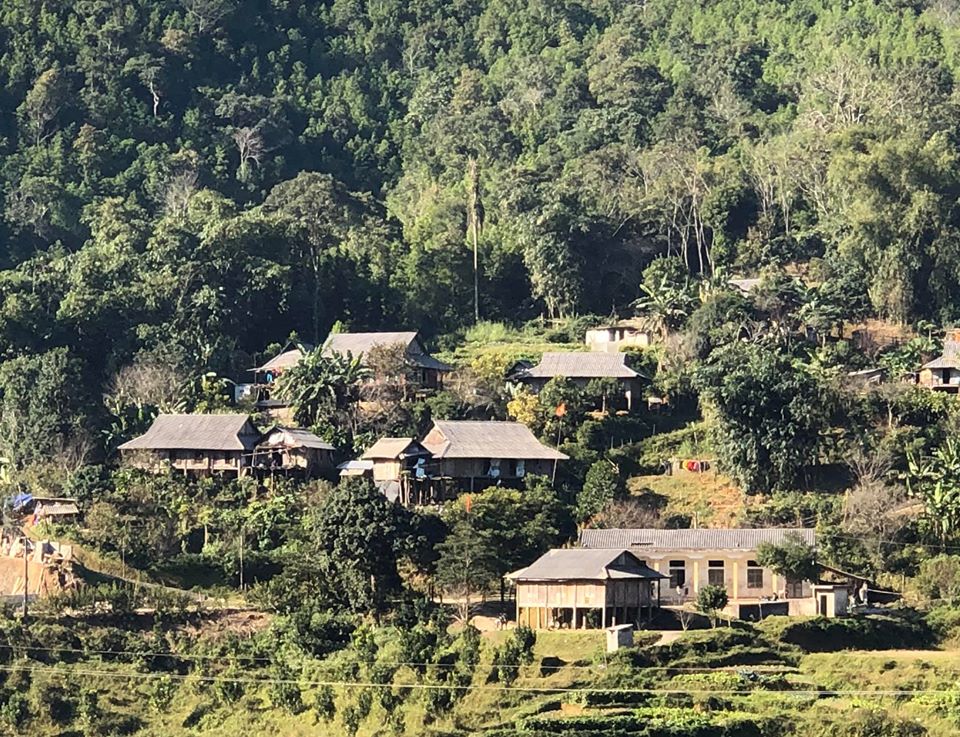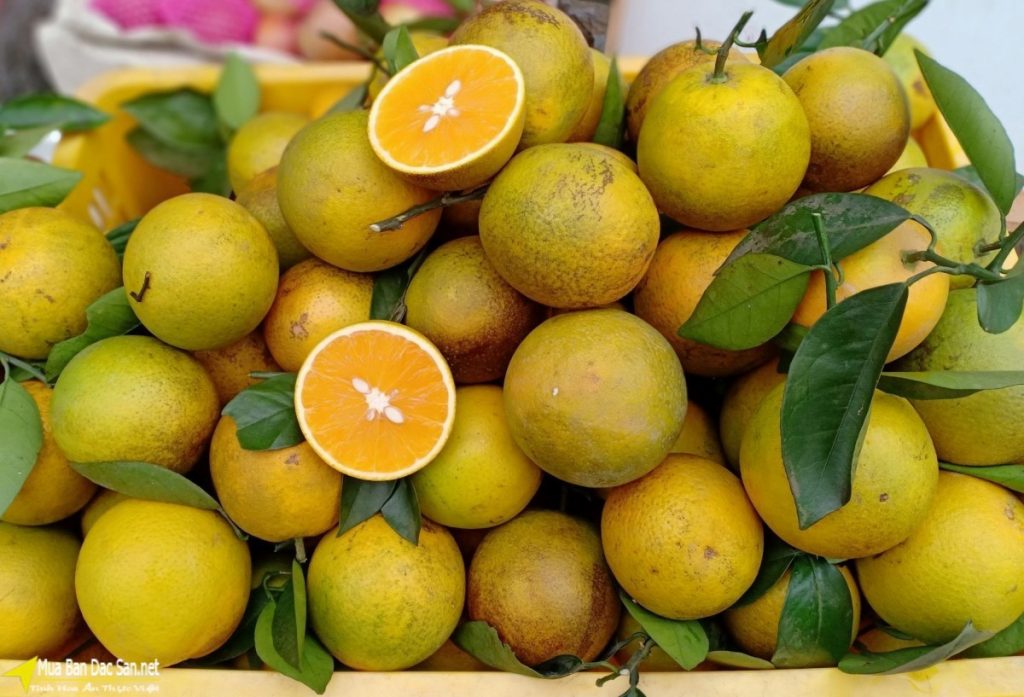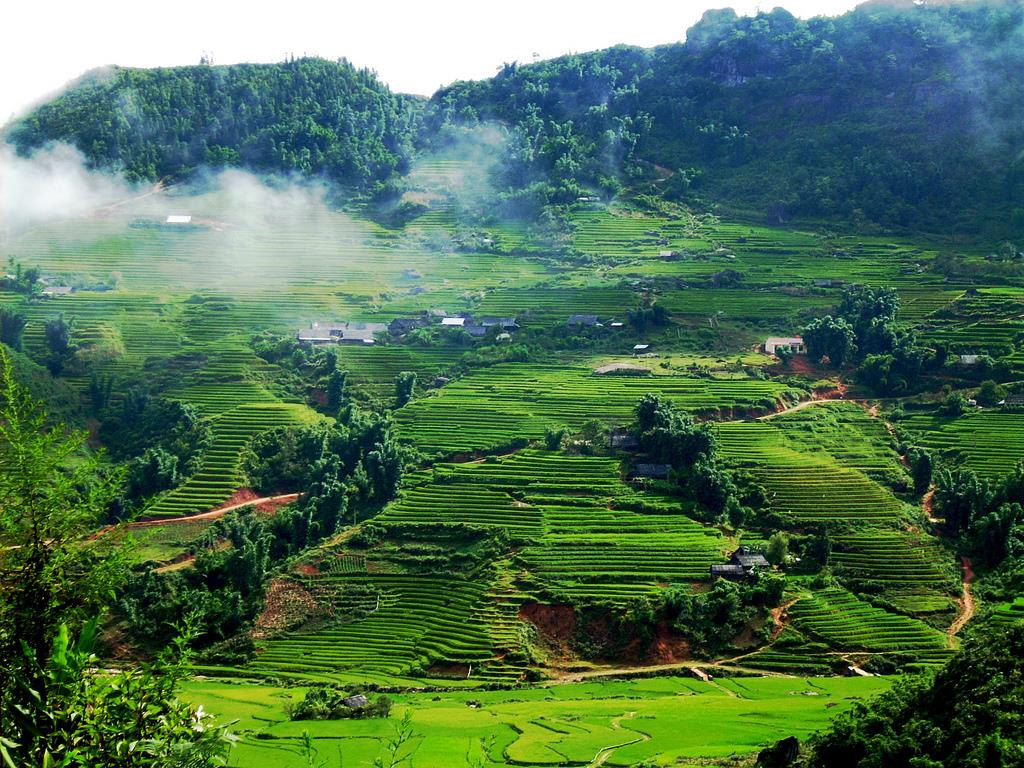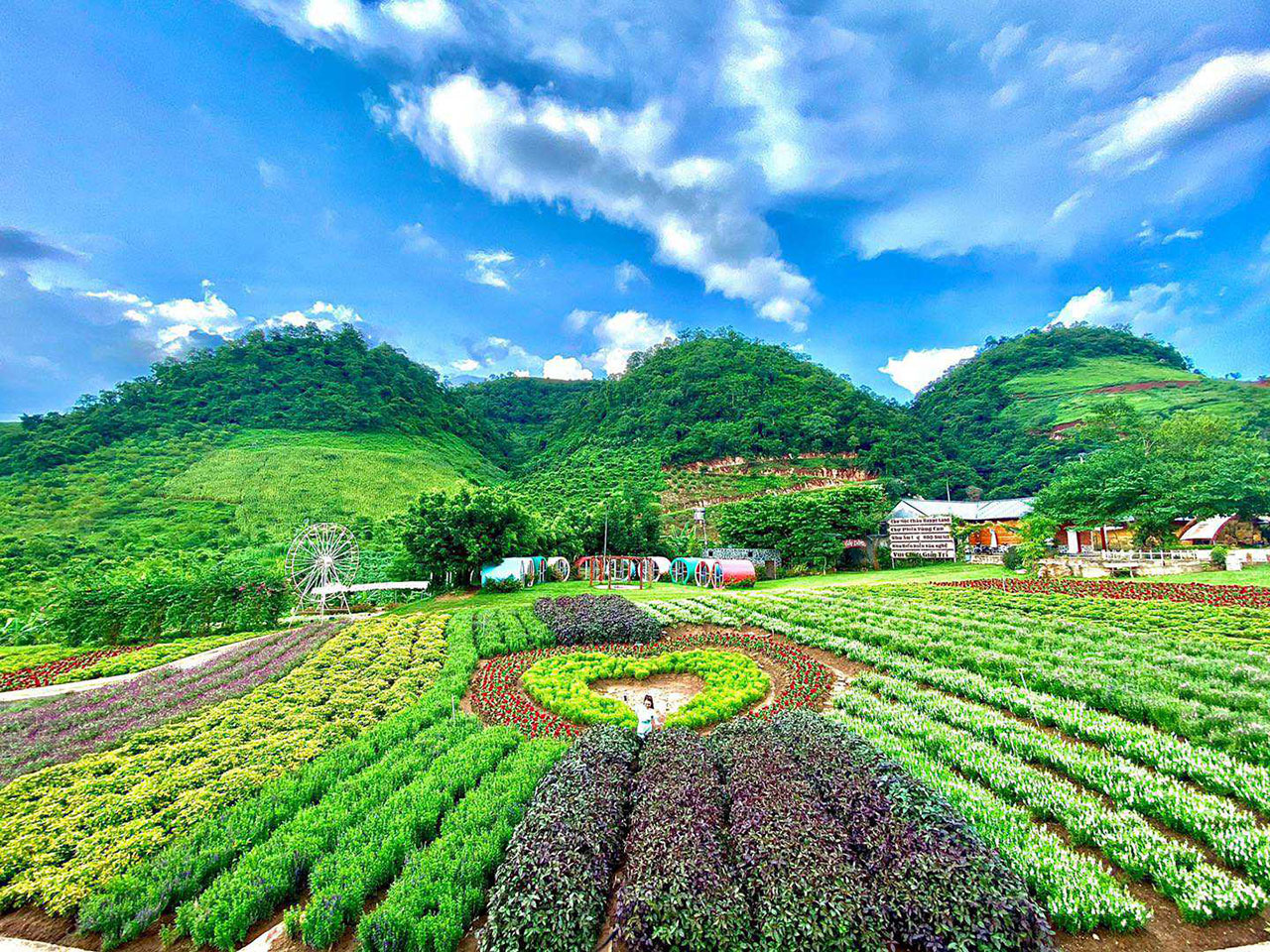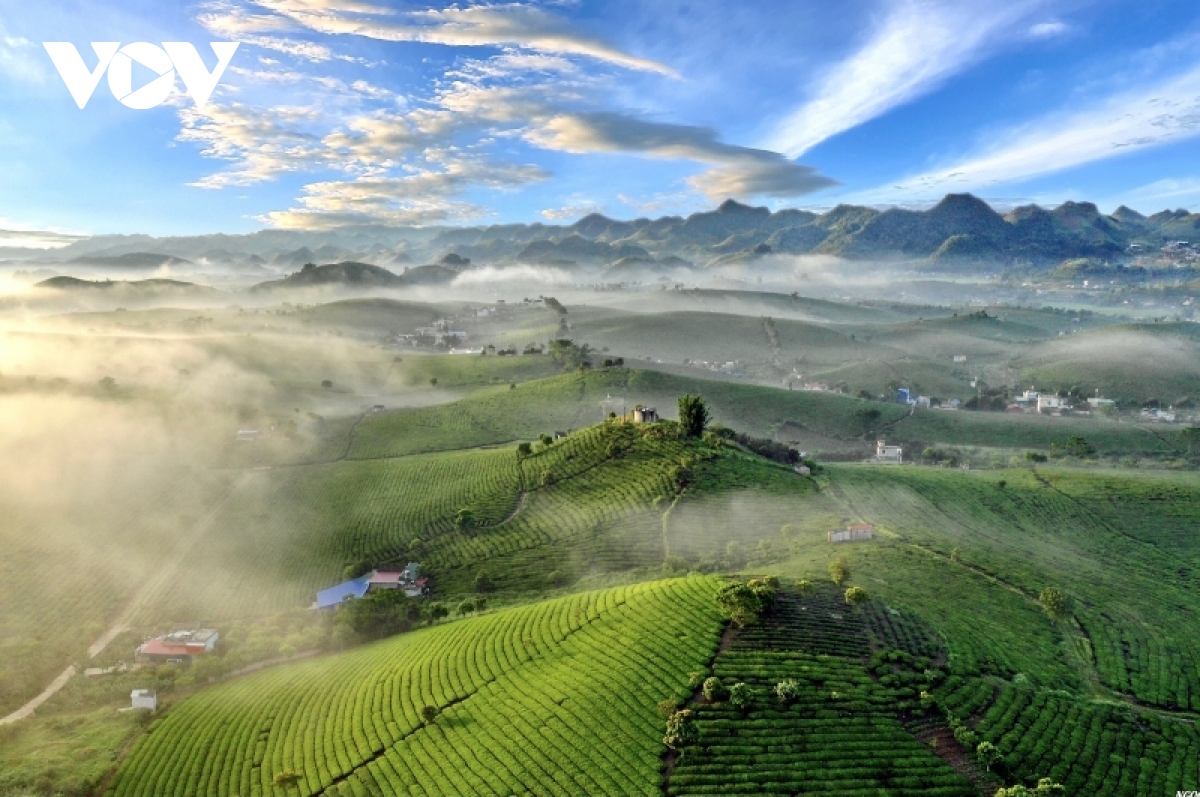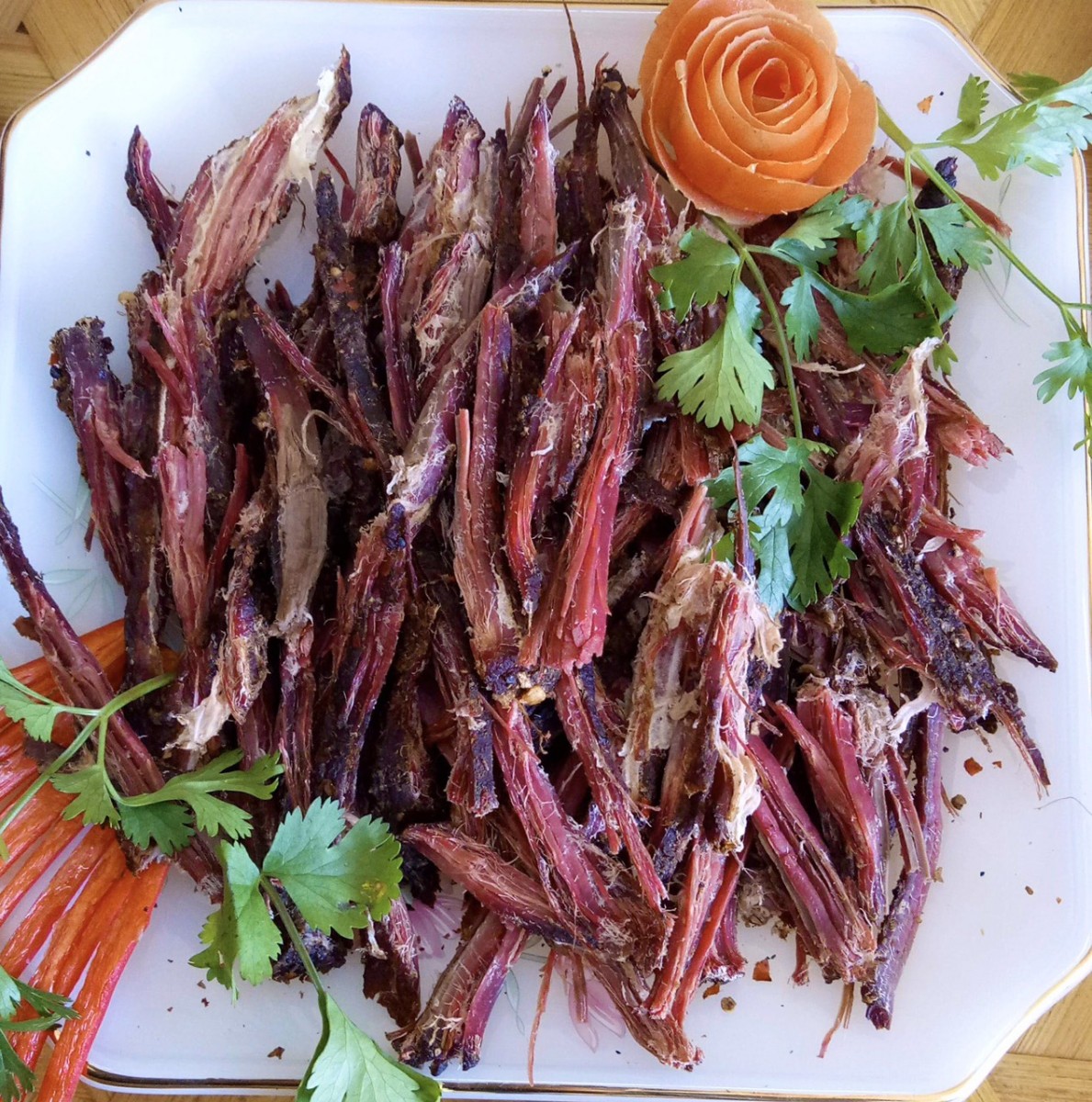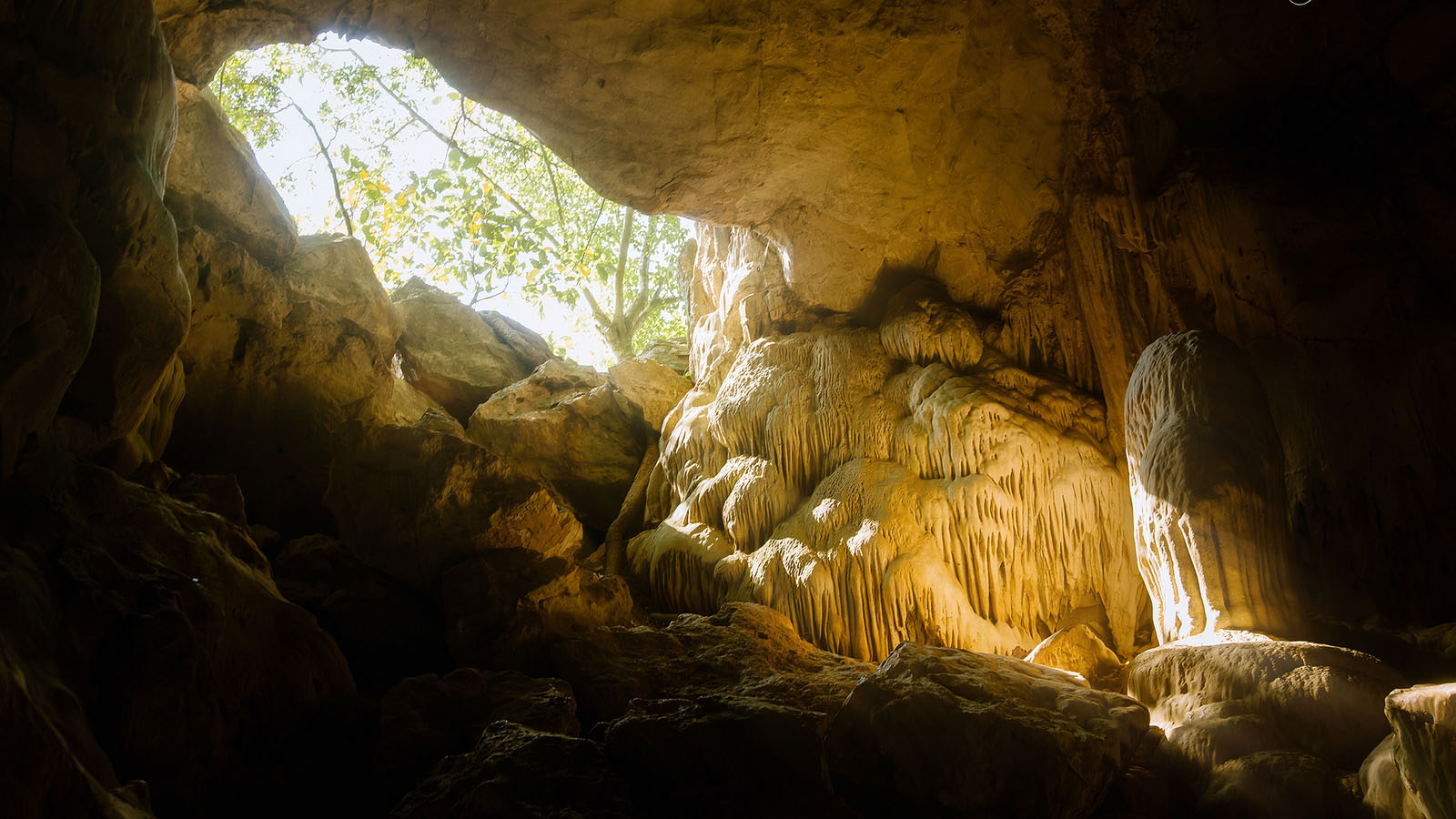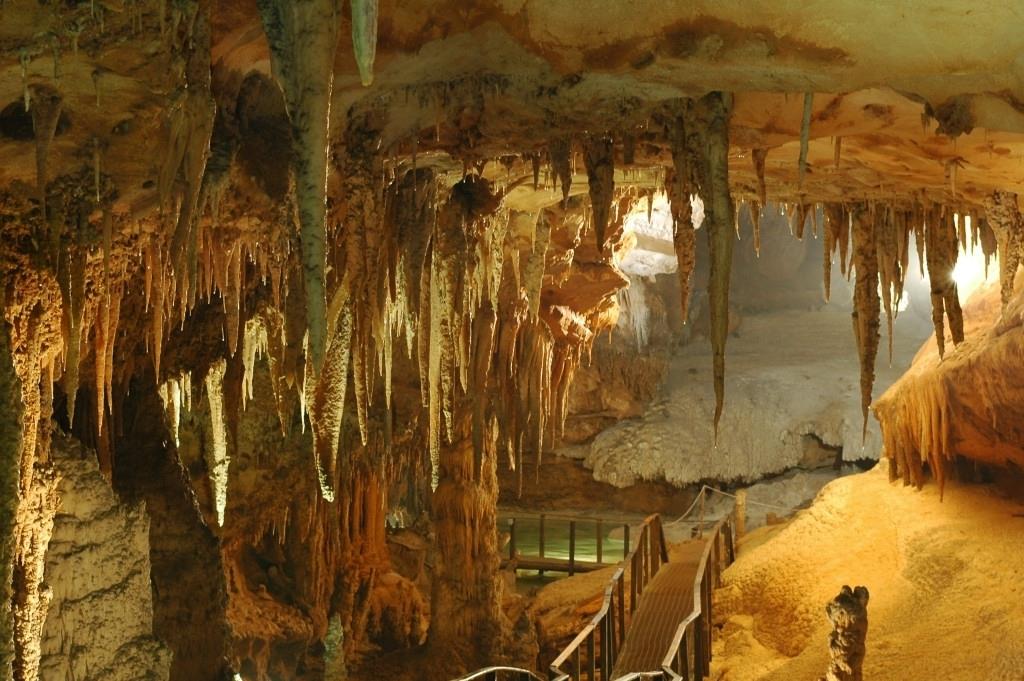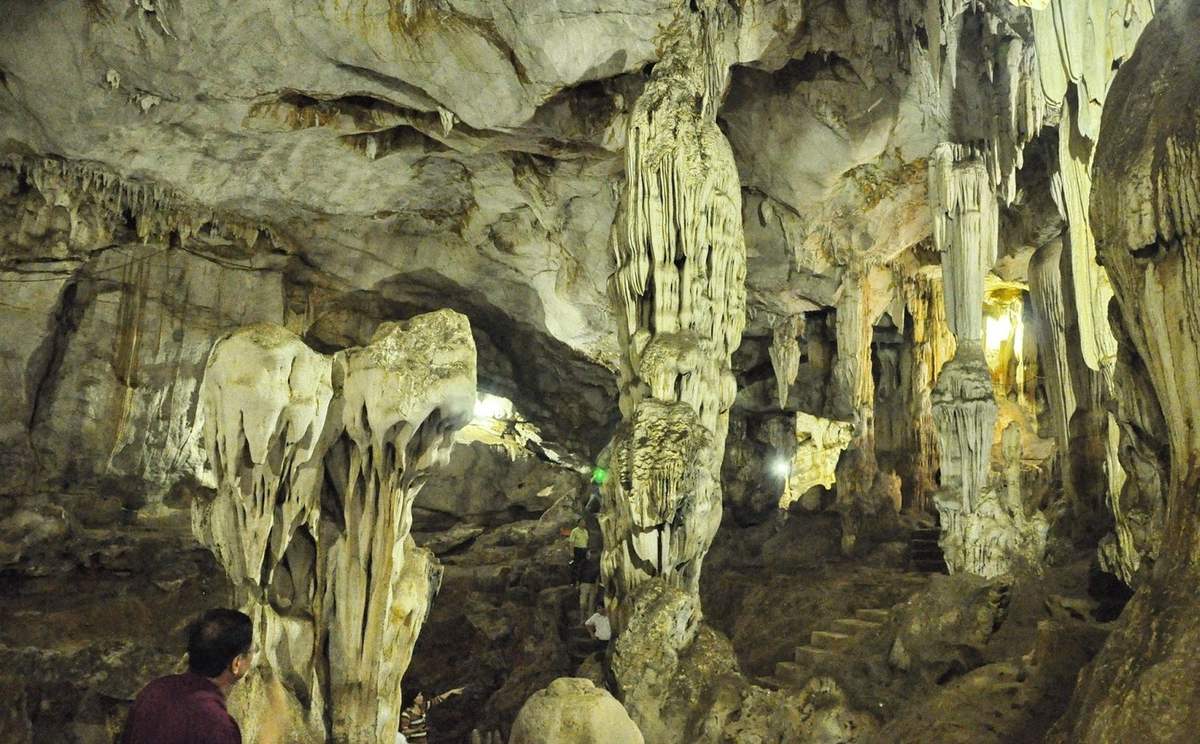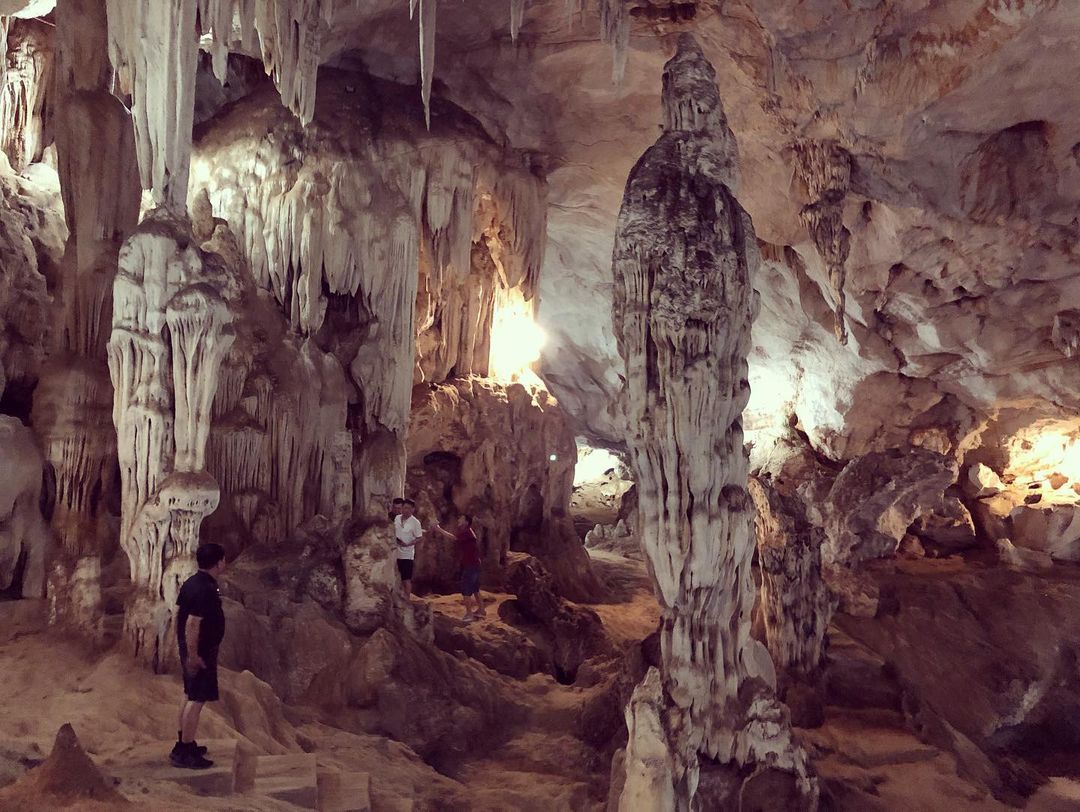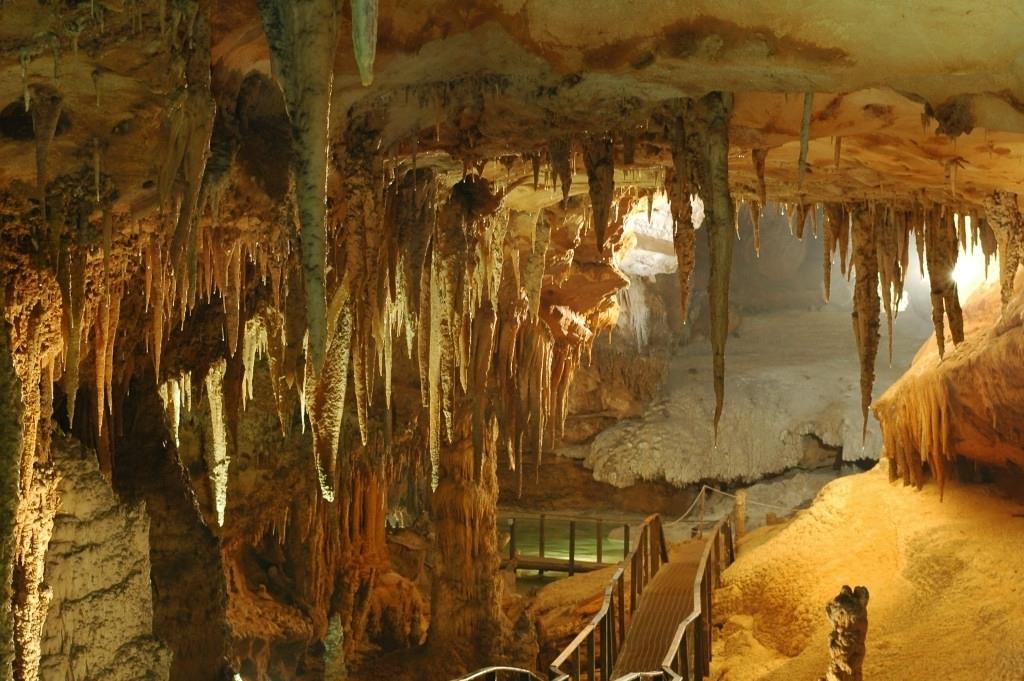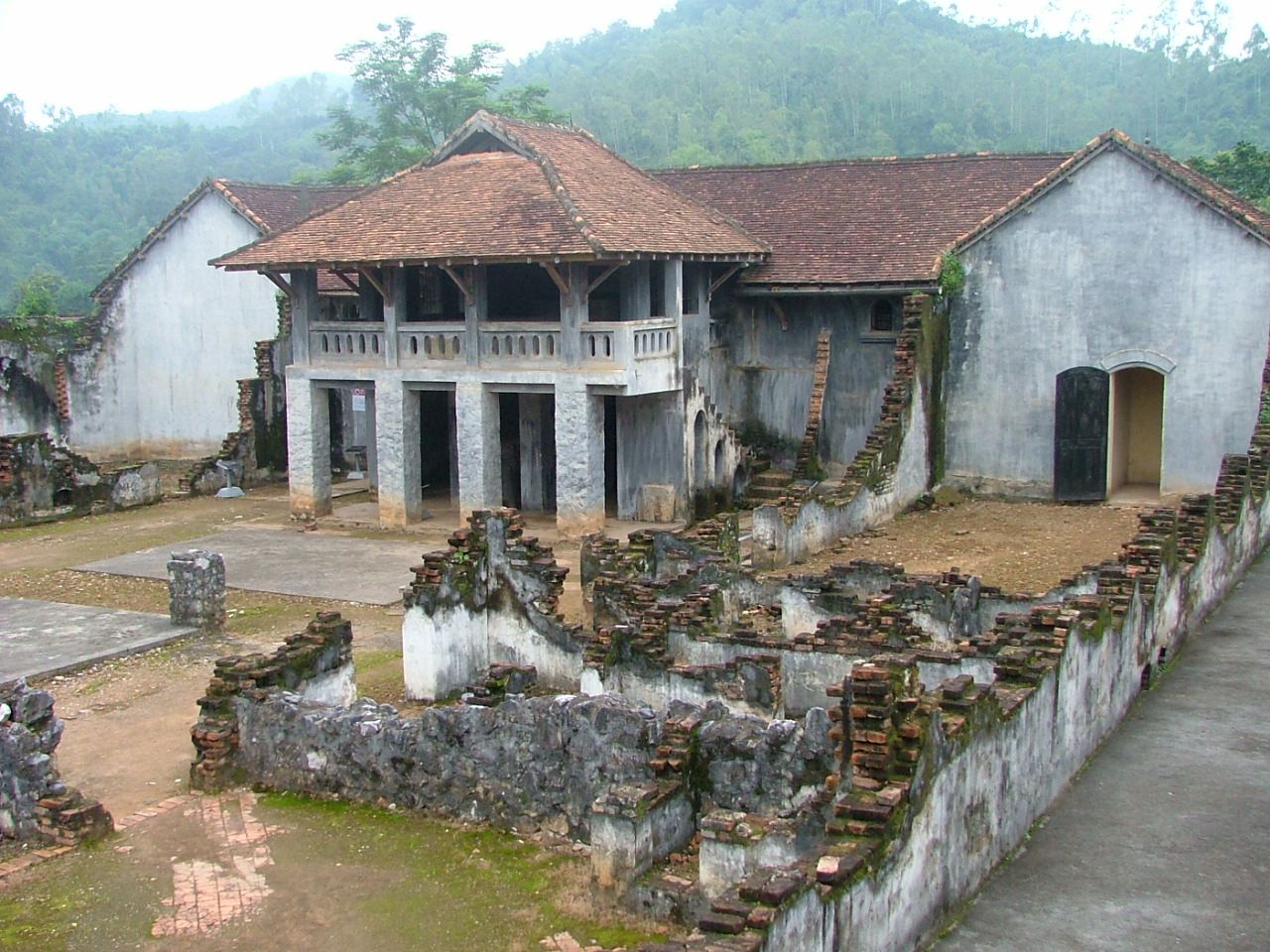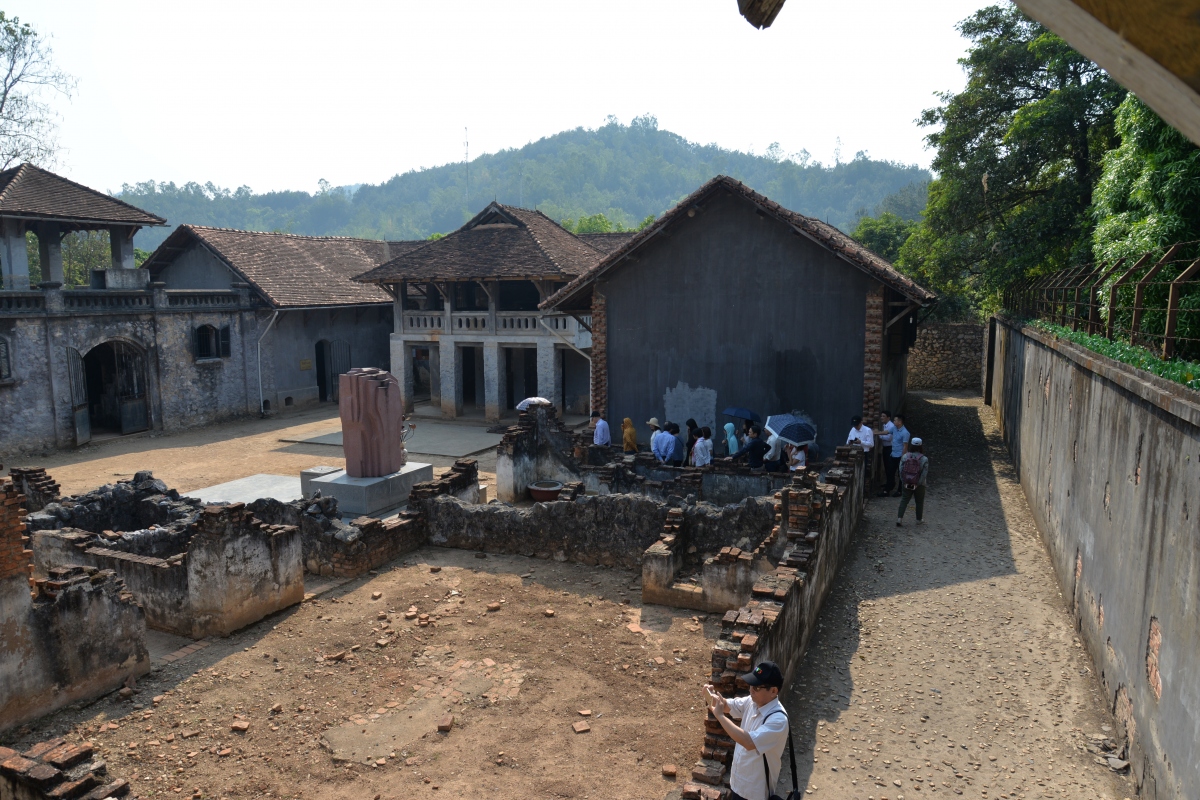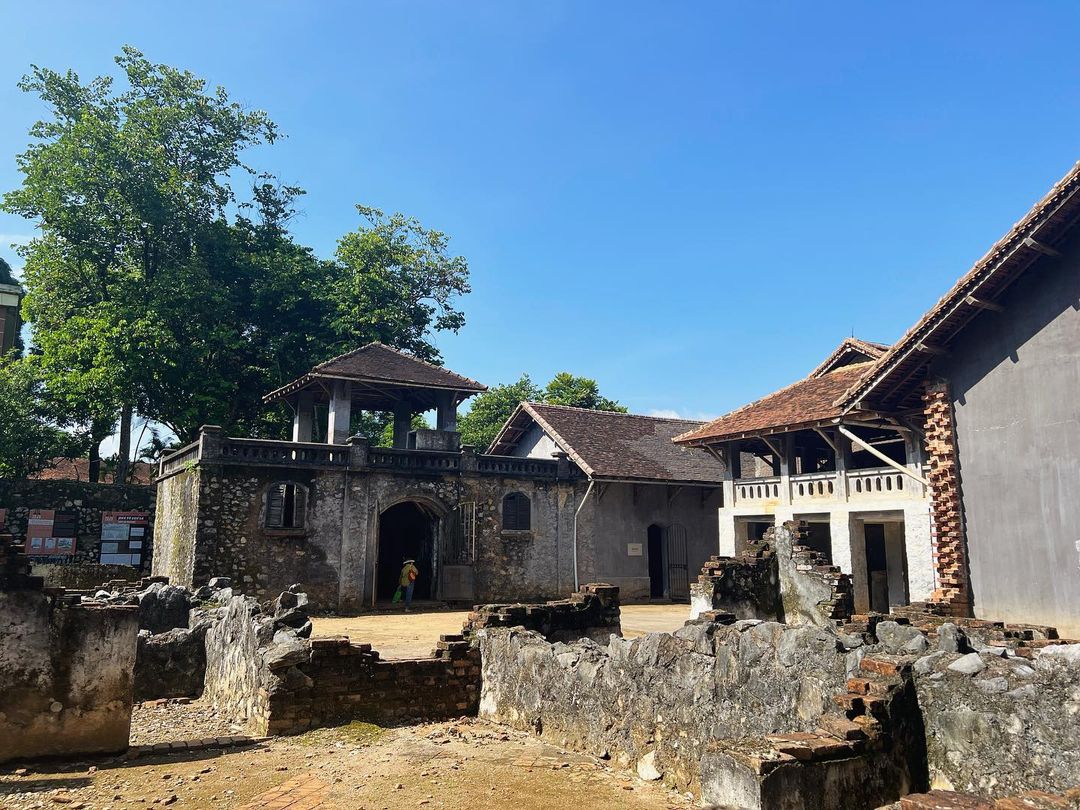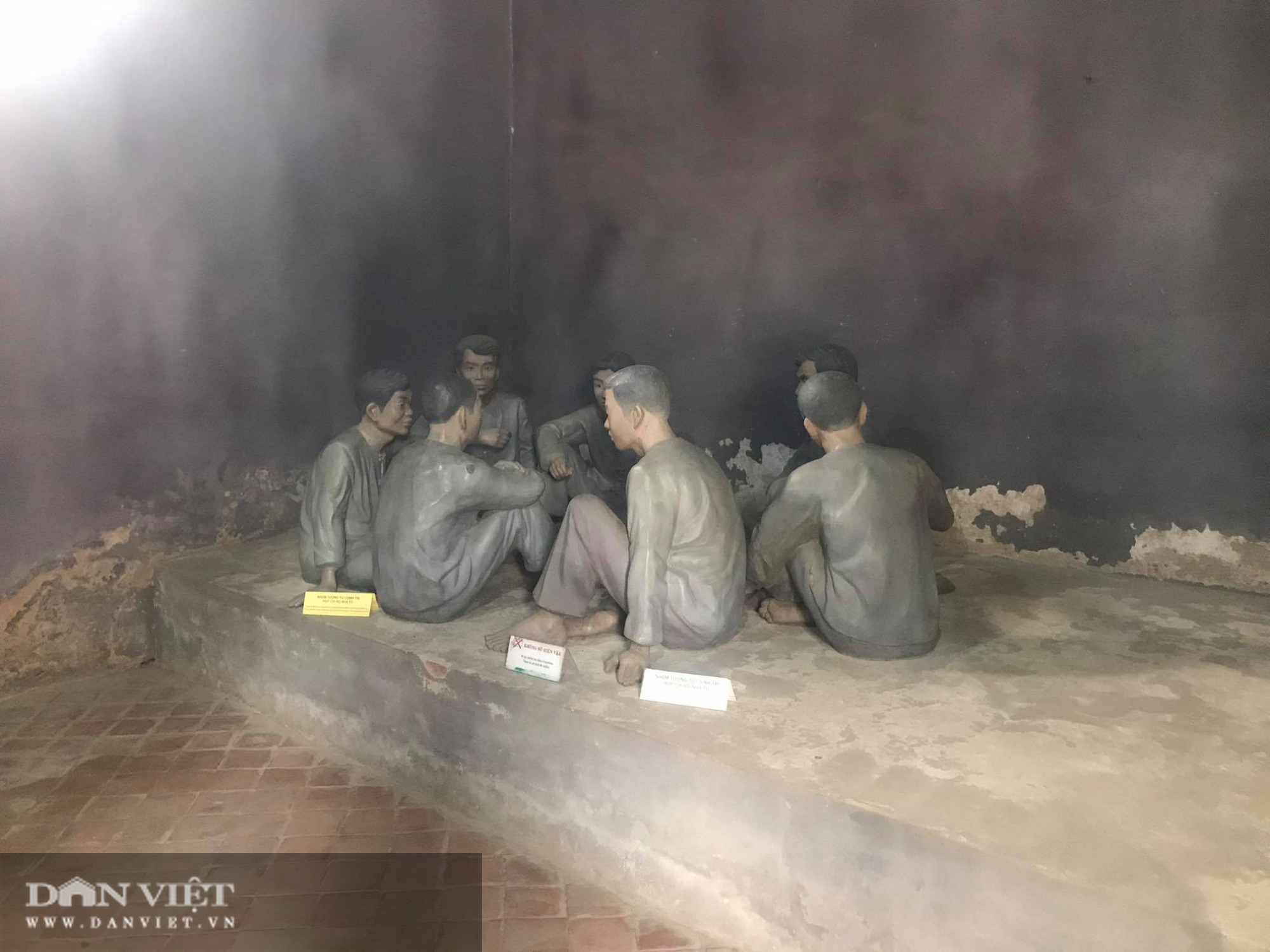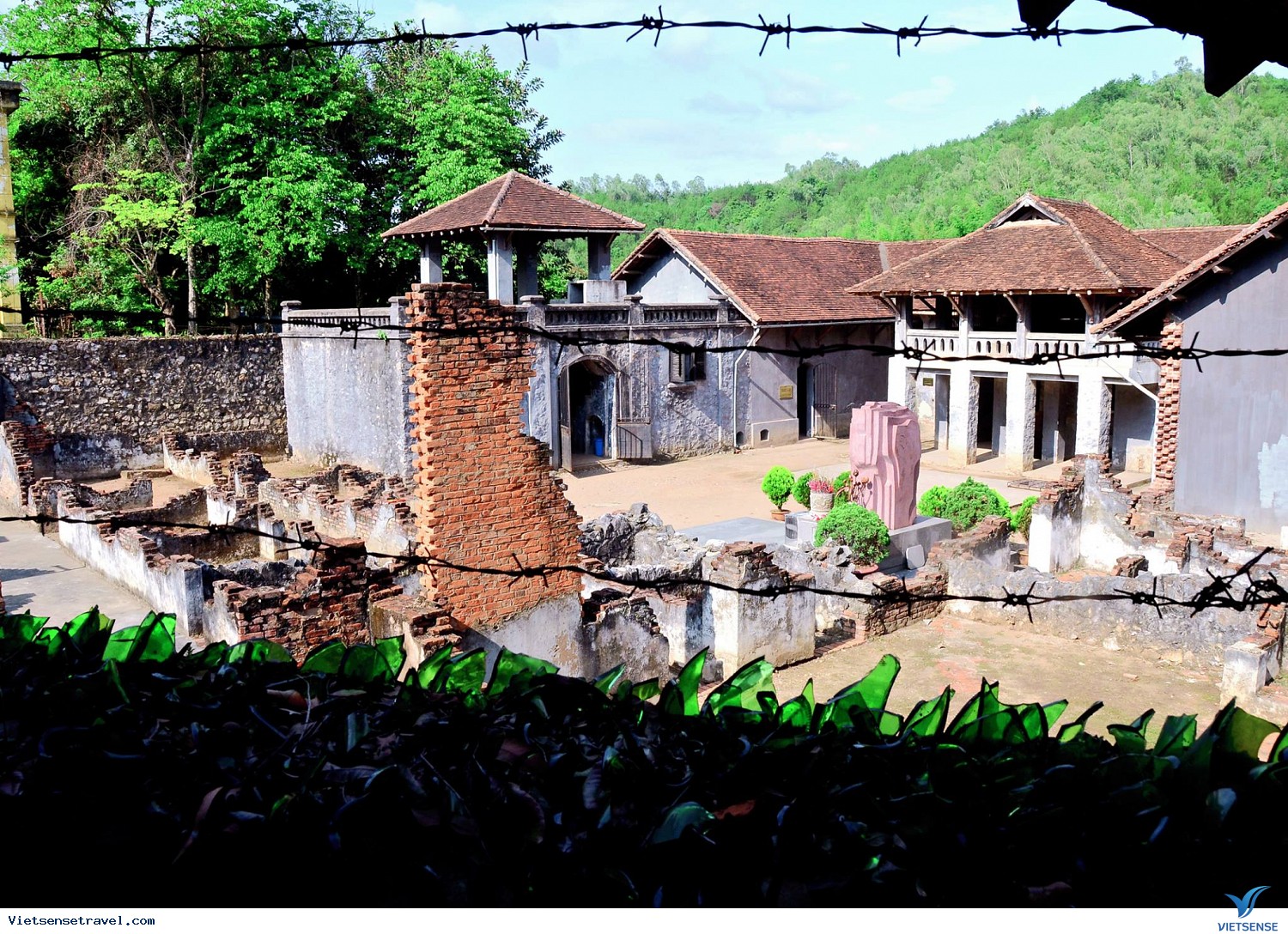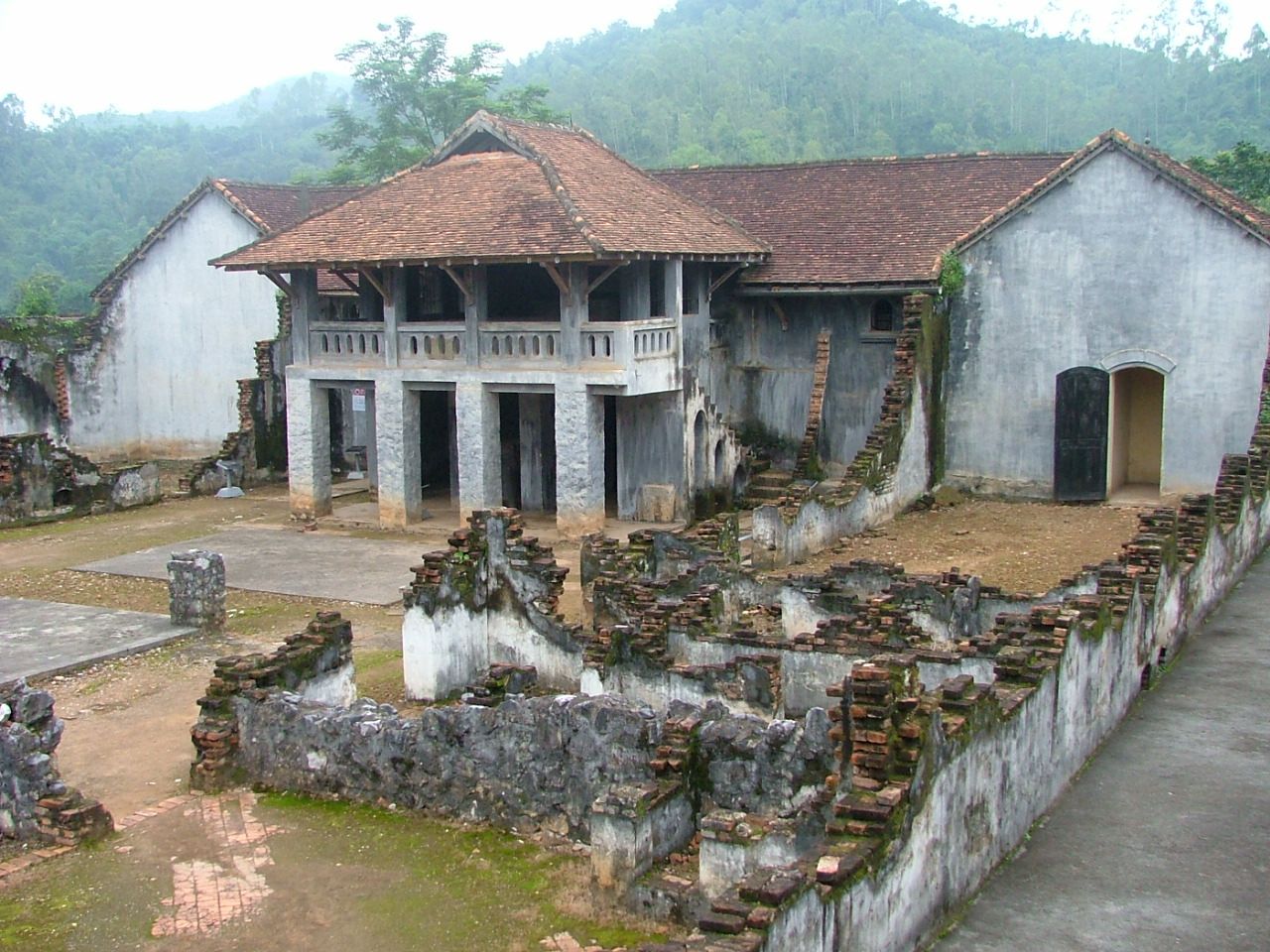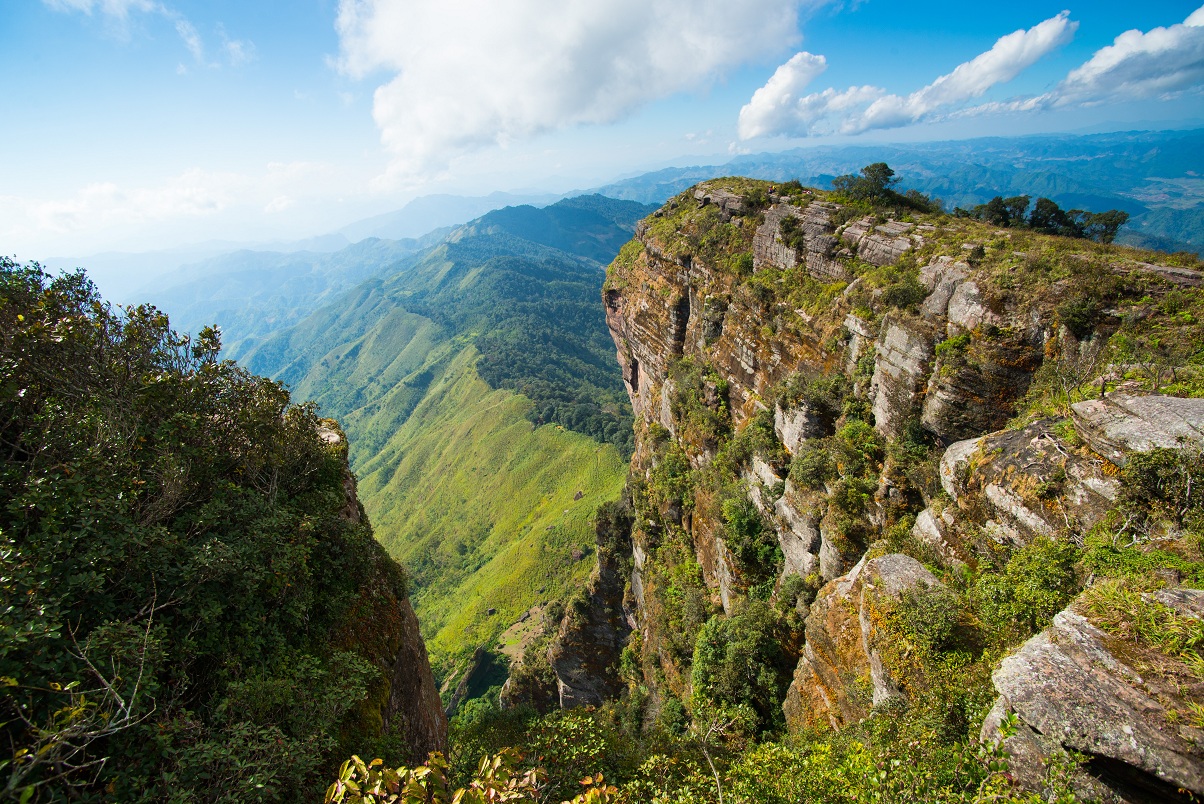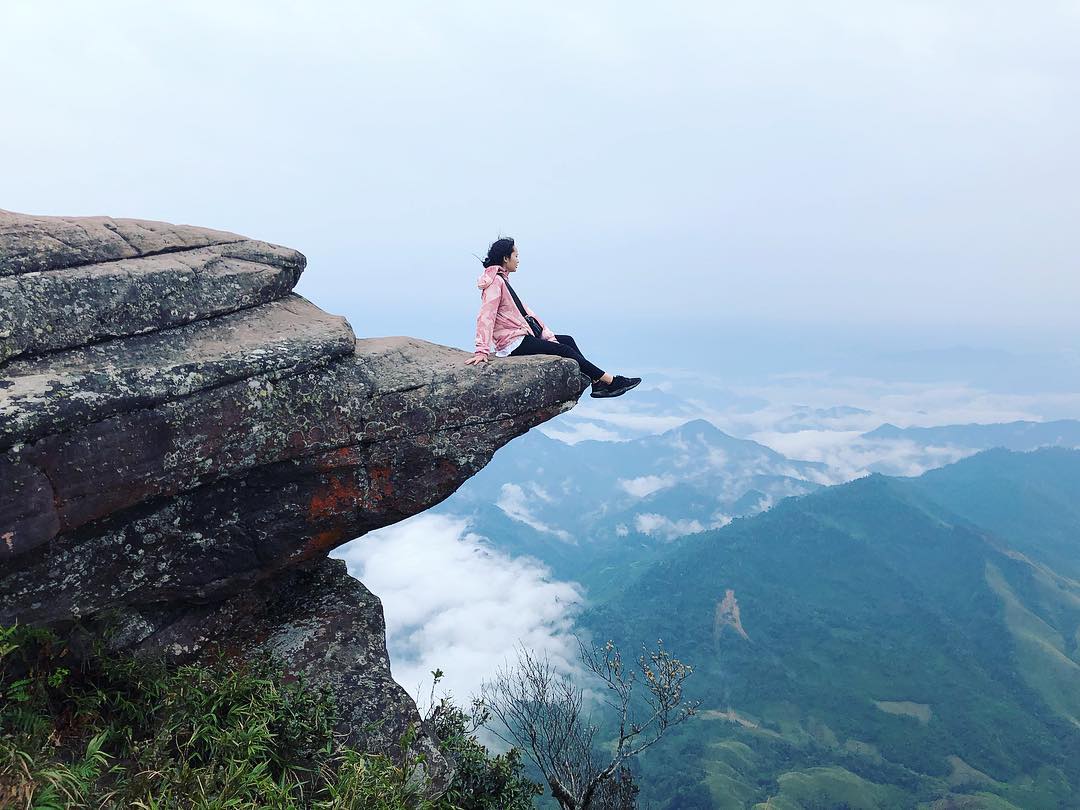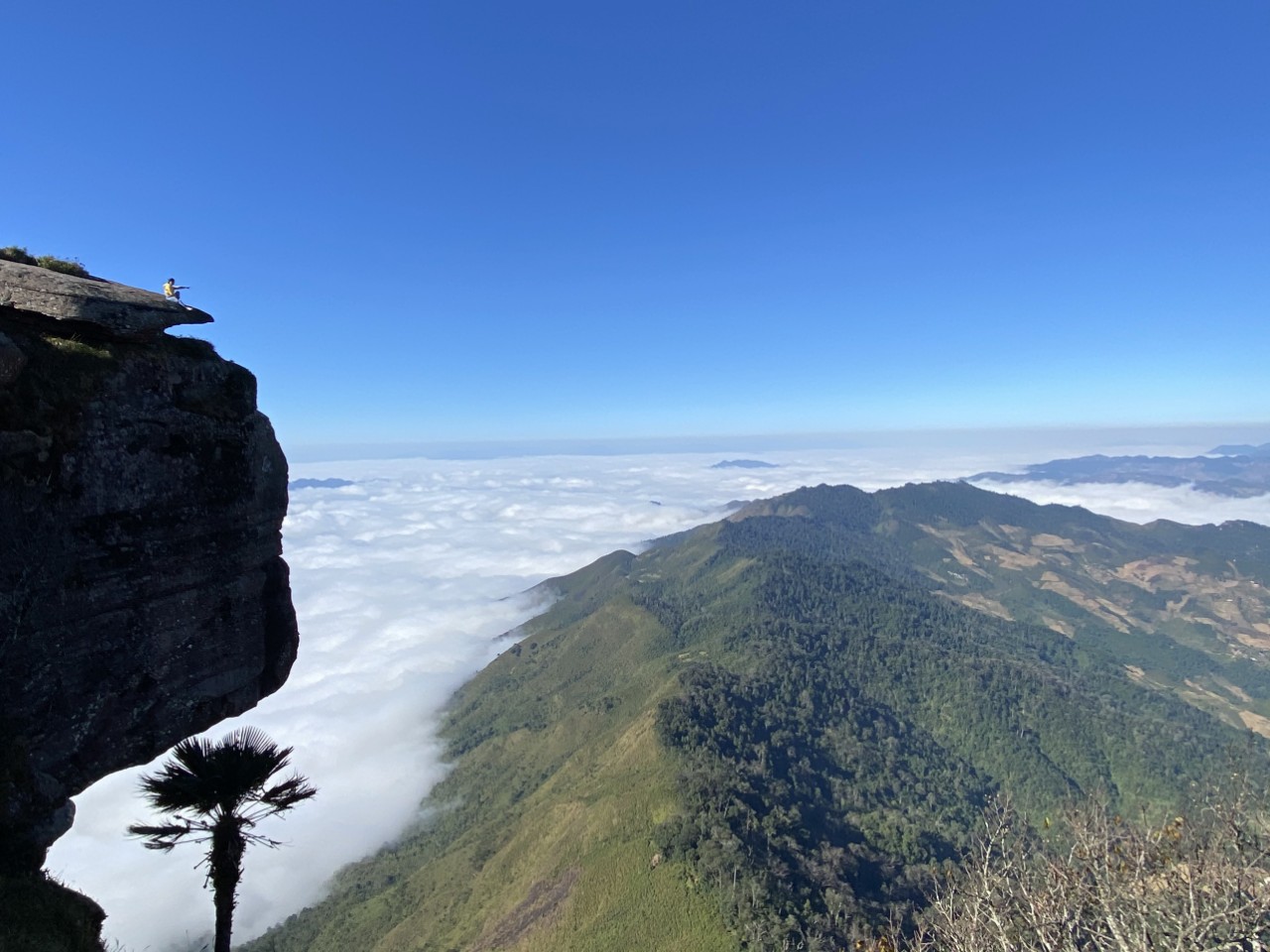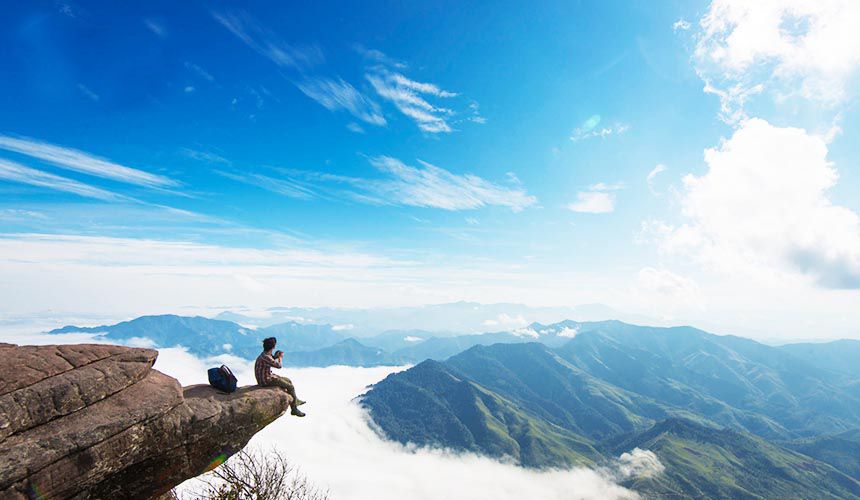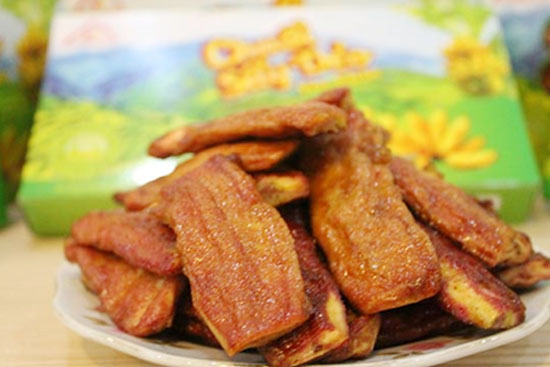Tourist destination
Na Hang tourist area
Possessing a spacious area of up to 350 hectares, Thang Thien Waterfall is part of the Vien Nam range, about 60km from the center of Hanoi. The road to Thang Thien Waterfall is quite easy, the route is short and the natural scenery is charming, so it is not surprising that this place quickly became a favorite sightseeing and picnic spot for many people. If you intend to go to Thang Thien Waterfall, you can go by bus or motorbike. If traveling by motorbike, don't forget to save the route MIA.vn revealed right below: Thang Long Avenue - Hoa Lac Hoa Binh Expressway - DT446 - Road 6 (AH13) - National Highway 6. From here, go A short distance further and you will reach the Ascension Waterfall. Many of you who have been here have shared that the most ideal time for you to start your journey to enjoy and explore Thang Thien Waterfall is between May and July. This is summer, the sky is clear, no rain. Suitable for you to participate in outdoor activities and picnics. Away from the bustling city, the journey back to Thang Thien Waterfall will soothe and comfort your soul. The scene at Thang Thien Waterfall is very beautiful with water rushing from above, creating white foam. Amidst the mist, the space at the waterfall seems more romantic. Thang Thien Waterfall is divided into many interesting levels, with each level covered by water creating a mysterious feeling. The higher you go, the road becomes quite slippery, so if you intend to reach the top, you should move slowly to ensure safety. Right below the foot of the waterfall is a lake full of cool water all year round. The water in the lake is clear and not too deep, so it is suitable for swimming. Surrounding the lake are rocks of all shapes and sizes, very suitable for those who want to have check-in photos during their Hoa Binh travel itinerary. Nestled deep in the heart of the jungle, the cuisine at Thang Thien Waterfall is mainly products of the highlands. After the journey to cool off and enjoy the scenery, you can recharge with a series of outstanding dishes, such as wild vegetables, bamboo-tube rice, buffalo meat cooked in bamboo leaves, spring rolls with grapefruit leaves, and grilled pork. , grilled fish, deep fried stream fish, etc.
Phu Tho
From January to December
4384 view
Na Hang tourist area
Far from the hustle and bustle of the city, Mai Chau is famous for its pristine and peaceful natural scenery. Located in the heart of the Northwest mountains, this place is a beautiful picture of natural colors and unique cultural features of the nation. Mai Chau has winding trails through green forests, yellow terraced fields, or traditional wooden houses looming in the majestic space. Not only is it a beautiful natural land, Mai Chau is also a rich cultural museum of the Thai people. Here, traditional cultural features are still preserved and carefully cared for, from soft hand-painted fabric paintings to exquisitely carved wooden items. The oral art of the Thai people has been and is becoming the pride of the entire country of Vietnam. Mai Chau is a district in Hoa Binh province, about 150km northwest of Hanoi capital. With the wild natural beauty and unique culture of the indigenous people, this is an attractive destination for tourists who love to explore and experience the national cultural identity, as well as enjoy the atmosphere. The peaceful, quiet atmosphere of Vietnam's mountains. From October to February is one of the best times to travel to Mai Chau. This is the time when the air becomes chilly and peach and plum blossoms bloom. The magical scenery of white flower petals makes the land become poetic. Surely you will be attracted to the peaceful natural beauty of Mai Chau this season. Furthermore, if you are a lover of romantic spaces, or always want to immerse yourself in the chilly atmosphere, winter is a great time to come to Mai Chau and enjoy memorable moments. From March to April is also a good season to go to Mai Chau. At this time, ban flowers bloom throughout Mai Chau. Besides, the weather during this period is often cool and pleasant, very convenient for participating in outdoor activities such as trekking or enjoying the beautiful landscape of the Northwest region. If you want to experience the freshness and radiance of spring, along with the soothing scent of blooming banyan flowers, March and April are the ideal times to visit Mai Chau and enjoy the unique landscapes. of this season.
Phu Tho
From October to February
4292 view
Na Hang tourist area
Thung Nai in recent years has been a familiar destination every weekend for those who love peace, avoiding noise and dust. As a commune in Cao Phong district, Hoa Binh province, Thung Nai is located in the bed of Da river lake, 25 km from the city center and about 110 km from Hanoi. With the perfect combination of mountains, islands and clear blue lakes, Thung Nai brings poetic beauty and relaxing moments. Thung Nai in recent years has been a familiar destination every weekend for those who love peace, avoiding noise and dust. As a commune in Cao Phong district, Hoa Binh province, Thung Nai is located in the bed of Da river lake, 25 km from the city center and about 110 km from Hanoi. The name Thung Nai makes many people think of a valley with deer roaming around. According to local people, this place was once home to many species of wild deer. The poetic image of golden deer bewildered in the afternoon sunlight on the slopes, reflecting on the Da River, was used by people to name this land. Nowadays, coming to Thung Nai, although there are no longer wild deer, the poetic and romantic beauty of the mountains and rivers here seems to still be intact. To explore this "golden deer valley", you can only use a boat or walk. Leave the car on the shore, the motorboat will take tourists for a tour on the hydroelectric lake. In the strong wind blowing from the lake, the picturesque scene of Thung Nai appears before your eyes. A large lake surrounded by rolling mountains. In the lake, hundreds of large and small "islands" undulate like magnificent natural masterpieces. Floating on the water, the motorboat weaves through the rocky outcroppings, creating the feeling of enjoying "Ha Long on land". A perfect combination of rivers, lakes and mountain rocks, Thac Bo cave is a destination not to be missed when coming to Thung Nai. The cave is located deep inside the mountain and is quite wild, but the scenery inside is beautiful. The whole forest of stalactites grows up and down, with strange shapes. After the high water season, visitors entering the cave can enjoy schools of fish swimming freely in the shallow, clear water. Right near the cave is Ba Chua Thac Bo temple. Although the temple is quite small and located on a steep mountain slope, this place attracts many tourists from all over to worship. For many people, stopping at the temple is an opportunity to enjoy the beauty of Thung Nai from a high perspective with floating white clouds and glimpses of ethnic villages. An interesting thing here is that when the Da River water dries up, visitors to the temple have to climb up steep stone steps, sometimes stumbling. But during the high water season, the steps flood, visitors to the temple just need to step down from the boat. If you go on Sunday, don't forget to visit Thac Bo floating market. Not too noisy and crowded, but a very typical cultural feature of the Muong people in Thung Nai. Thung Nai in recent years has been a familiar destination every weekend for those who love peace, avoiding noise and dust. As a commune in Cao Phong district, Hoa Binh province, Thung Nai is located in the bed of Da river lake, 25 km from the city center and about 110 km from Hanoi. The name Thung Nai makes many people think of a valley with deer roaming around. According to local people, this place was once home to many species of wild deer. The poetic image of golden deer bewildered in the afternoon sunlight on the slopes, reflecting on the Da River, was used by people to name this land. Nowadays, coming to Thung Nai, although there are no longer wild deer, the poetic and romantic beauty of the mountains and rivers here seems to still be intact. To explore this "golden deer valley", you can only use a boat or walk. Leave the car on the shore, the motorboat will take tourists for a tour on the hydroelectric lake. In the strong wind blowing from the lake, the picturesque scene of Thung Nai appears before your eyes. A large lake surrounded by rolling mountains. In the lake, hundreds of large and small "islands" undulate like magnificent natural masterpieces. Floating on the water, the motorboat weaves through the rocky outcroppings, creating the feeling of enjoying "Ha Long on land". A perfect combination of rivers, lakes and mountain rocks, Thac Bo cave is a destination not to be missed when coming to Thung Nai. The cave is located deep inside the mountain and is quite wild, but the scenery inside is beautiful. The whole forest of stalactites grows up and down, with strange shapes. After the high water season, visitors entering the cave can enjoy schools of fish swimming freely in the shallow, clear water. Right near the cave is Ba Chua Thac Bo temple. Although the temple is quite small and located on a steep mountain slope, this place attracts many tourists from all over to worship. For many people, stopping at the temple is an opportunity to enjoy the beauty of Thung Nai from a high perspective with floating white clouds and glimpses of ethnic villages. An interesting thing here is that when the Da River water dries up, visitors to the temple have to climb up steep stone steps, sometimes stumbling. But during the high water season, the steps flood, visitors to the temple just need to step down from the boat. If you go on Sunday, don't forget to visit Thac Bo floating market. Not too noisy and crowded, but a very typical cultural feature of the Muong people in Thung Nai. As the boat slowly moves through the water, the windmill stands tall on the small island, attracting the attention of anyone passing by. This is like the invitation of a vacation home in the middle of the lake. Therefore, whether they come back during the day or stay overnight, most tourists coming to Thung Nai want to stop by this small island to see with their own eyes the seemingly unique windmill. in the Netherlands, or in the famous novel "Don Kihote - the talented nobleman of Manta". Not only is it unique, the windmill here also has a beautiful viewing spot. From here, you can zoom out into the distance, taking in the entire ink painting of Thung Nai in your sight. If you go up the "mill" early in the morning, you will see Thung Nai engulfed in mist, while when the sun rises, the clear blue lake surface sparkles yellow. In addition to the pristine natural landscape, the specialty parties of the Muong people have become a highlight in Thung Nai. It was a meal with stream fish, hill chicken and exotic wild vegetables.
Phu Tho
From January to December
3963 view
Na Hang tourist area
Hoa Binh Hydropower Plant was built at Hoa Binh Lake, Hoa Binh province, on the Da River in Northern Vietnam. Before Son La hydroelectric plant was inaugurated, this was the largest hydroelectric plant in Vietnam and Southeast Asia. Hoa Binh Hydropower Plant - a century project built with help from the Soviet Union in 1979 in Hoa Binh City. Where Soviet experts and tens of thousands of engineers and workers, many of whom were teachers and students from the Faculty of Civil Engineering - Water Resources University, had unforgettable years, with determination and thirst. A burning desire to create miracles in conquering the Da River. On the largest scale construction site in Southeast Asia at that time, at peak there were up to 40,000 workers working. Although there are still many difficulties, lack of electricity, lack of water, hard and dangerous work, the enthusiasm of working youth has urged the hands and minds of engineers and workers to turn the river into a source of doll. Everyone did not care about difficulties and hardships, enthusiastically working up to 3 shifts, 4 shifts, all night long "for the tomorrow's electricity of the Fatherland". Labor slogans have now become legendary such as "High altitude". 81 or die" has shown the spirit of working urgently, enthusiastically, and overcoming difficulties of the young generation on the construction site. People's efforts and efforts to overcome all time and all dangerous terrain have been rewarded. On December 31, 1988, the first generating unit of Hoa Binh Hydropower Plant generated electricity to the system, signaling a historic moment for the country and the Vietnamese Electricity industry. On April 4, 1994, the eighth and last power unit of the plant was officially completed, with a total installed capacity of 1,920 MW. On December 24, 1994, our country excitedly celebrated the important event of the inauguration of the Hoa Binh Hydropower Plant on the Da River, marking the result of 15 years of selfless labor for the electricity of tomorrow for the Fatherland. Tens of thousands of officials, employees and experts on the construction site were constructing for the first time a great project of the twentieth century. After more than 30 years of operation, by 2021, the plant has provided the country with a total output of over 250 billion kWh, annually contributing more than 1,000 billion VND to the province's State budget. In addition, TDHB actively and effectively participates in flood control, ensuring safety for the Northern Delta and Hanoi Capital. With a large reservoir capacity of up to 10 billion cubic meters of water, the flood prevention capacity Flood estimated at 5.6 billion cubic meters, Hoa Binh hydropower plant has made a great contribution to flood prevention, ensuring safety for the entire Northern Delta region, especially Hanoi capital. Since the Hoa Binh Hydropower Plant was put into operation until now, the Northern Delta region has no longer had flooding. TDHB has controlled dozens of major floods of over 10,000 m3/sec; Typically, the historic flood in August 1996 had a flow of more than 22,650 m3/sec; The late flood that appeared in October 2017 (when the reservoir was full) had a flow of nearly 16,000 m3/sec with very complicated and unpredictable developments. At the same time, maintain the safety of the project and the downstream area of the Northern Delta.
Phu Tho
From January to December
4607 view
Na Hang tourist area
Nine waterfalls Tu Son includes 9 waterfalls, each waterfall possesses its own unique beauty, both unique and blending together to create a beautiful landscape that makes many people ecstatic and fascinated. These include Au Co love waterfall, Tien Tam waterfall, Trai Chieu Quan Lang waterfall, Ut Lot waterfall, Silver waterfall, Truong Phu waterfall, Thuong Ngan month, Mau waterfall and Thien Ngoc Thach waterfall. Nine waterfalls are located in Kim Boi nature reserve, Cu hamlet, Tu Son commune, Kim Boi district, Hoa Binh province and about 60 km from the center of Hanoi capital. Therefore, this is an ideal rendezvous for people in Hanoi and neighboring provinces to have the opportunity to leave the hustle and bustle of the city and wander to pristine nature on short holidays or weekends. . Walking on the trail around those waterfalls, you will feel like you are going on an exciting trekking trip in a primeval forest with a poetic space and fresh, airy atmosphere. Somewhere you will also see a few wildflowers blooming, a few small squirrels on the rows of green trees. You will also listen to the roaring sound of the waterfall and the chirping of birds. The beautiful scenery will make you more excited, and the long journey will no longer be tiring. Continuing your journey to explore different waterfalls one by one, you will encounter enchanting waterfalls, containing the magical beauty of nature. These waterfalls have beautified the wild space, making it more poetic, sparkling, and charming. That scene not only makes you more excited and eager to explore nature, but also connects you and nature, making you even more connected and familiar. In the early mornings, the scenery around the waterfalls becomes dim and magical, making travelers from far away admire it in amazement. When the sun comes out to give bright yellow rays of sunlight, the water color of the waterfalls has a slight yellow tint, then at sunset it changes to a shimmering pink color. Perhaps the most beautiful time the waterfall is when a colorful rainbow spans across the "silver silk ribbons", illuminating the entire sky. Au Co Waterfall is located in the upper reaches of Tu Son peak at an altitude of about 1300 m above sea level. With this waterfall, travelers from far away will feel like they are admiring a shimmering silver silk strip in the middle of the ocean, like the long, silky hair of a young girl. Tiny sparkling water sprays illuminate a corner of the forest and vague, dreamy images flicker behind the waterfalls. Au Co Love Waterfall flows into Lac Long Quan Lake, next to it there is a giant round stone block, associated with the legend of the eternal love story between Au Co and Lac Long Quan and their 100 children, sharing the forest and the sea. If you have the opportunity to set foot in the royal garden at an altitude of more than 1,000 m in the nine waterfalls of Tu Son, visitors will also have the opportunity to freely admire the charming natural picture, letting their soul be blown away by the wind. At that time, you will surely feel fresh, gentle emotions and feel peaceful even in the middle of the wild mountains and forests. Visitors can also stop, enter small huts to rest, enjoy lunch and take a relaxing nap for a few minutes to get ready for the next journey of discovery. Just like that, it won't be too difficult for you to conquer these 9 beautiful waterfalls of Muong country!
Phu Tho
From January to December
4447 view
Na Hang tourist area
Lung Van is located at the highest peak of Muong Bi. That's why this place is known as "the roof of Muong". Isolated by traffic, perhaps that is why Lung Van retains its pristine beauty from ancient times. Visitors coming here not only have the opportunity to admire the nature of the mountains and forests, but also enjoy the fresh, pleasant space, helping you feel extremely relaxed and comfortable. The road to explore Lung Van, although difficult, always creates a strange attraction for any traveler. Perhaps because of the clouds of sky hovering around the traveler, mixed with the natural scenery of mountains and forests. All create a beautiful, unreal picture. In particular, visitors can go to the highest position in Lung Van to admire the clouds flying in the early morning, when the sun has not yet risen. In the morning in Lung Van, the wind is cool and the sunlight is gentle, white clouds hover around the mountain tops and villages... When the sun appears, its rays penetrate straight through the dense layers of clouds and spill into the valley. The morning dew drops on a winter day settle on the green leaves of the terraced fields like sparkling jade. The white of the clouds, the yellow of the sunlight and the green of thousands of trees blend into one. All create a wonderful poetic picture in the middle of a mountainous region that can only be found in Lung Van. Besides the "cloud hunting" experience, visitors also enjoy other discovery activities such as climbing Co Tien mountain, trekking U Bo hill, enjoying the feeling of bathing in Mo stream or immersing yourself in fresh nature. Not only that, tourists also have the opportunity to participate in community cultural activities, or even experience the daily work of Muong people such as rice planting, rice harvesting, and fruit harvesting. This is also an opportunity to gain a deeper understanding of the cultural identity and life of the region here. Lung Van is known as the ideal "Rattan Hunting" spot. So which season of the year is best to travel to Lung Van? This is the question of many tourists. Lung Van is known as the "roof of Muong" and is most beautiful from after Tet to April every year because this is the time with the most clouds. The clouds drifted slowly from evening until the next morning. And it's not until noon that you see the clouds completely clear. Moreover, this is also the time when Muong people begin the planting season across the long terraced fields. So according to the experience of many backpackers, traveling to Lung Van Hoa Binh in April is the best time for cloud hunting. Or if you don't need to hunt clouds, choose the golden rice season in Lung Van in August, it will definitely not disappoint you.
Phu Tho
From January to December
4589 view
Na Hang tourist area
Moc Chau has four seasons: spring, summer, autumn, winter with mild weather and flowers and fruits all year round. In January, the plateau is green with budding tea hills, peach blossoms, plum blossoms, apricot blossoms, cherry blossoms... From mid-May, plums begin to ripen, people harvest plums and sell them to lowland traders. There are no flowers in summer, nor is it strawberry season, but this place is very suitable for picnics because of the fresh air and many outdoor activities. The persimmon season in Moc Chau starts from August to December every year. In particular, the crispy persimmon season usually comes earlier, from August to October, while from October to the end of the year is the season for astringent persimmons. The white mustard season in Moc Chau begins in November. In December, bright yellow wild sunflowers decorate the plateau. Moc Chau is nearly 200 km from Hanoi. If traveling by motorbike, you should follow the old Highway 6 because there are many beautiful scenery along the way, but you should pay attention to the steering wheel because the road is quite degraded. The journey takes about 4-5 hours. On the way, you will pass the S-shaped road in Van Ho district. Most travelers stop to admire the scenery and check-in at this soft S-shaped curve. If you take a bus, you can choose routes to Son La from My Dinh or Yen Nghia bus station, then get off at Moc Chau with a high-quality bus ticket price of about 200,000 VND. If you drive your own car, you don't need to worry too much because the road is big and easy to go despite many steep passes. Be careful, drive at the right speed and pay attention to the lane when passing. In the summer, the roads are less foggy but visibility is limited when it rains. The section that may be cloudy is the road from Thung Khe section. Moc Chau has many motels. However, to get quality accommodation during peak season, you should still call to book in advance. There are eco-lodges (with mountains, lakes, stilt houses) or homestay-style community motels. The price of a room is about 200,000 - 300,000 VND per night but there are also many motels with lower prices. Some suggested "chill" homestays are MAMA's House, Le Chalet du Lac, Fairy House Moc Chau, House By Lake, The Nordic Village, Moc Chau Retreat... Room prices range from 300,000 to 1,000,000 VND per night. To fully explore Moc Chau, you can go quickly in 2 days. If you have more time, about 3-4 days is best, you will have plenty of time to find beautiful camera angles to take photos or go to neighboring famous tourist areas such as Thung Nai, Mai Chau, Hoabinh water electric... Places you can visit: Ban Ang pine forest, Mu Nau plum valley, Sunflower garden, Moc Chau tea exchange, Chieng Khoa waterfall, Nang Tien waterfall, Dai Yem waterfall, Grassland 68, Nguyen Thuy village, Pha Luong peak. Eateries and restaurants are located along the town center passing through Highway 6. In addition to specialties such as plums, tea or milk, Moc Chau is also famous as a delicious place to eat. The dishes not to be missed when coming here are fried veal, fried stream fish, multi-dish lentil fish, salmon hot pot, pork blood pudding, buffalo meat on the stove, vegetables dipped in fish intestine sauce or five-color rice. If you want to eat dairy veal, you can find restaurants Dong Hai, Xuan Bac 181, Nam Hung 70, or Lan Hong 64, Ve Quan Moc Chau... A strange dish to try is Moc Chau fresh milk hot pot. The broth is simmered from bones and vegetables, a moderate amount of milk is added to give it a milky white color and mild flavor, and corn is added for sweetness. When the hot pot begins to boil, the layer of milk on top begins to thicken, giving it a fatty and fragrant taste. This is also the time when the hot pot broth is at its most delicious. In the past two years, Moc Chau has also been famous for producing strawberries with quality not inferior to those of Japan or Korea because they are grown using Japanese technology. Winter will be the strawberry harvest season on farms with gardens filled with ripe red strawberries, sweet and sour taste, and if eaten with Moc Chau yogurt, it is very easy to become "addictive". In the summer, after plum season, there will be melon season with sweet fragrant fruits. You can buy tea, milk, cat apples, corn, corn wine... as gifts from these locations: intersection 73 near town, sub-area 32 and Bo Bun, intersection 70, peach garden intersection, sub-area Chieng Bi area. Moc Chau usually has warm sunshine during the day, but the night temperature is quite low and foggy. You need to bring enough warm clothes to ensure your health, and check your vehicle's lights before departing. Do not litter, step on people's mustard beds or climb on trees, break wild peach branches, plum branches, flowers...
Son La
January to December
4854 view
Na Hang tourist area
With an area of 6,915 square meters, Bat Cave contains an underground water source that never dries up. The name Bat Cave originates from the fact that in the past, there were large colonies of bats living and nesting here, but now they have left elsewhere. However, the name Bat Cave is still called by people here to this day as a familiar name from a long time ago. Above the ceiling of the cave are high stone arches hanging down to form magical shimmering stalactites. These stalactites form many interesting shapes such as fairies, fairies, animals... All create a scene that is both sparkling and majestic. This is a place that when traveling to Moc Chau you should not miss! Legend has it that once upon a time, there was a sacred dragon who, when flying over this land, saw the majestic mountains and cool climate, so he humbled himself and hid in Bat Cave and resided here. That's why this mountain range has many mysterious colors such as: white in the morning, blue at noon, then pink in the afternoon, and finally purple at sunset. People here often tell each other that it is because the dragon's body is surrounding the mountain. Later, when the dragon died, it released 7 pearls to repay the favor. The 7 pearls are the 7 mountains that later created Bat Cave. Thanks to the legendary stories that have been passed down from generation to generation, this place becomes even more attractive and makes many curious tourists want to come here to verify. From the moment you enter from the cave entrance, the light shining into the cave will make you feel like you are lost in a fairyland with different dark and light shades. Visitors will admire the beauty of the limestone stalactites hanging down, creating an amazing natural picture. Furthermore, these rocks also have many different shapes, making them interesting for visitors. The most special is the stone block shaped like a man and woman in love in the shallow lake in the middle of the cave, a highlight that makes everyone admire. In the cave, in addition to the shapes created from limestone blocks, there are also many banyan trees whose roots form shapes on the ground such as elephants, tigers... Another special thing about Son Moc Huong Cave is that the middle of the cave is arched higher than other places in the cave, with a stone curtain at the entrance. This is called the "princess" chamber, which is also an attraction in this place. This. Bat Cave is both a place to visit and a place to explore with forests and trees growing around, so visitors need to pay attention to the following things: Because the cave is located in a dense forest, visitors should wear comfortable and covered clothes to both climb the mountain and avoid being bitten by insects or mosquitoes. You should also bring mosquito spray to ensure safety. , especially with children. When visiting Son Moc Huong Cave, parents need to pay attention to their children's health when climbing the mountain and visiting the cave, then provide timely solutions if the child is too tired or too hyperactive to run around. toss.
Son La
From January to December
5976 view
Na Hang tourist area
In the heart of the city, there is a hill named Khau Ca lying beside the Nam La stream. This place also preserves historical evidence of Son La Prison - evidence of a historical period of revolutionary struggle and the spirit of injustice. The remains of resilient communists who were imprisoned by the French colonialists, and the Son La museum, which displays many precious artifacts, introducing the historical and cultural traditions of a community of 12 ethnic groups united together. together to build Son La into a rich province of Vietnam. Son La Prison was built by the French colonialists in 1908 with an initial area of 500 m2. The prison is built quite solidly: the walls are built of stone and brick, the roof is covered with corrugated iron, there is no ceiling, the beds for prisoners are also built of stone, the surface is cemented, the outside edge is attached with a system of vertical leg shackles. along the length of the floor. In each cell there is a floating toilet built higher than the floor, without a lid, without flushing water, and not cleaned regularly. With such a design, in the summer, the Lao wind of the Northwest region causes scorching heat, the frost creates cold, bone-chilling cold in the winter, combined with the polluted environment in the area. Each cell has caused diseases to arise and spread very quickly among prisoners. In 1930, the Communist Party of Vietnam was born and led the people to fight against the brutal regime of feudal colonialism. The struggle movement surprised the enemy, who frantically sought every way to suppress and arrest patriotic Vietnamese people in an attempt to quell the revolutionary movement. On the other hand, strengthen the construction and expansion of the prison system throughout the country, paying special attention to Son La prison. In 1940, Son La Prison was expanded to add a large prison to hold more prisoners and send a number of female prisoners to Son La, but that plot failed to materialize. Thus, through 3 times of construction and expansion, Son La prison has a total area of: 2,170m2. The French colonialists turned this place into a living hell to imprison, deport and destroy the will of the Communists to fight. With an extremely harsh prison regime and extremely cruel torture methods, the enemy thought they could destroy the spirit and body of the revolutionary soldiers, but this place became a revolutionary school. network, train the will and supplement the Party and the revolution with loyal communist soldiers and party members, most notably the role of comrade To Hieu and many other loyal comrades. After being devastated twice by the enemy's bombs, the old relics are now dilapidated, remaining almost nothing more than a pile of destroyed bricks, and the ruined prison walls are a testament to the brutal crimes of the enemy. What remains intact is the To Hieu peach tree, a symbol associated with the name of the steadfast Party Secretary of the prison, which still blooms brilliantly when spring comes... In 1952, when the French colonialists withdrew from Son La, they bombed to erase traces of their crimes. The second time in 1965, the American imperialists raided Son La Town and destroyed part of the prison. In 1980, Son La Museum carried out the first restoration: Leveling bomb craters, rebuilding some surrounding fence sections; The second time, in 1994, restored the two watchtowers, the kitchen, the large prison, reinforced the underground bunker, and built the walls of the cells according to the traces of the old foundations. In 1994, Son La Museum intended to restore the entire relic site to its original form, but could not find complete records, so there was not enough scientific basis to restore the entire site. Just build the walls a little higher so visitors can visualize the structure of the Son La prison complex. Every year, the historical site of Son La prison welcomes hundreds of thousands of tourists to visit, research, study... Surely, at some point, tourists come to Son La, return to the mountains and forests. Northwest to experience and reminisce about the war that took place more than a century ago; With the skillful leadership of the party, the passionate patriotic spirit willing to sacrifice for national independence, the strong solidarity between peoples... We have left behind a peaceful country for today's posterity.
Son La
From January to December
4885 view
Na Hang tourist area
Possessing an impressive height above sea level of 2,000 m, the mountain peak is located in the Vietnam - Laos border area and has received the love of many tourists in recent years. After arriving at the center of Moc Chau district, you need to travel another 40 km to reach the foot of the mountain. In addition to the name Pha Luong peak, visitors can also use the name Bo Lung to talk about this tourist destination. When you come here, you will experience the feeling of conquering the mountain peak with impressive heights. In particular, it is the feeling of seeing the majestic and wild scenery from above that is not available everywhere. For those who love to explore and are passionate about adventure sports, this will be a great destination. You can also enjoy the fresh, cool atmosphere of the Northern highlands and relax after the stress and fatigue of life here. For young people, this is an ideal check-in point and great "cloud hunting" in the early morning. Featuring the climate of the North with four distinctly changing seasons, visitors can reach Pha Luong peak at any time of the year. Because this place at each time will bring its own unique beauty and impression to tourists. However, because the road to the top of the mountain is up to 2000m high and difficult, visitors should choose a travel time from March to April. This is the time with warm sunshine and no rain, convenient for climbing. The mountain is safer as well as helps the sightseeing process. One of the famous check-in points when conquering Pha Luong peak is the uniquely shaped rock outcrop. The breadth of space and scenery, along with the rocky outcrop that juts out, make your photo even more impressive. Visitors do not need to worry because the stones are quite large and thick. Be careful when checking in in the rain because they are easily slippery. In addition to experiencing the scenery and atmosphere at the top of the mountain, visitors also have the opportunity to discover more about the typical Lao market. You can find handicraft products, specialty dishes in Moc Chau, dried meat,... as gifts for relatives or friends after the trip. Although it is an attractive tourist destination and brings wild and impressive beauty to tourists. But Pha Luong peak is quite difficult to conquer, so in addition to experience, you also need to know the following notes: With an altitude of 2000m, when you reach the top of the mountain you will see the temperature drop quickly. Especially, if you come in the winter, the temperature is lower, so you need to bring warm clothes, towels, wool hats, gloves, etc. To avoid sudden changes in temperature that affect your body. During climbing, you should use specialized shoes for climbing. Do not wear flat shoes or sandals because they can cause slipping and danger during movement. Visitors should carefully consider their health and mobility before deciding to climb Mount Pha Luong. People with cardiovascular diseases should not move to the mountains. Before conquering the mountain peak, you should have a light snack and drink water to give yourself more energy. Absolutely do not arbitrarily throw trash indiscriminately while moving or visiting the mountain top. Always bring identification documents to present for check-in procedures at the border station.
Son La
From March to April
5170 view
